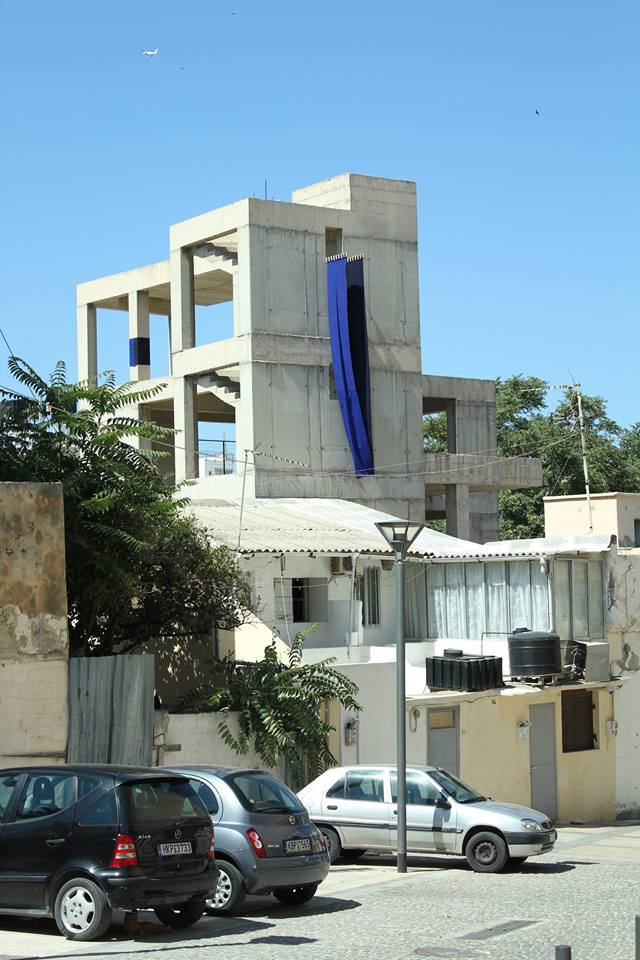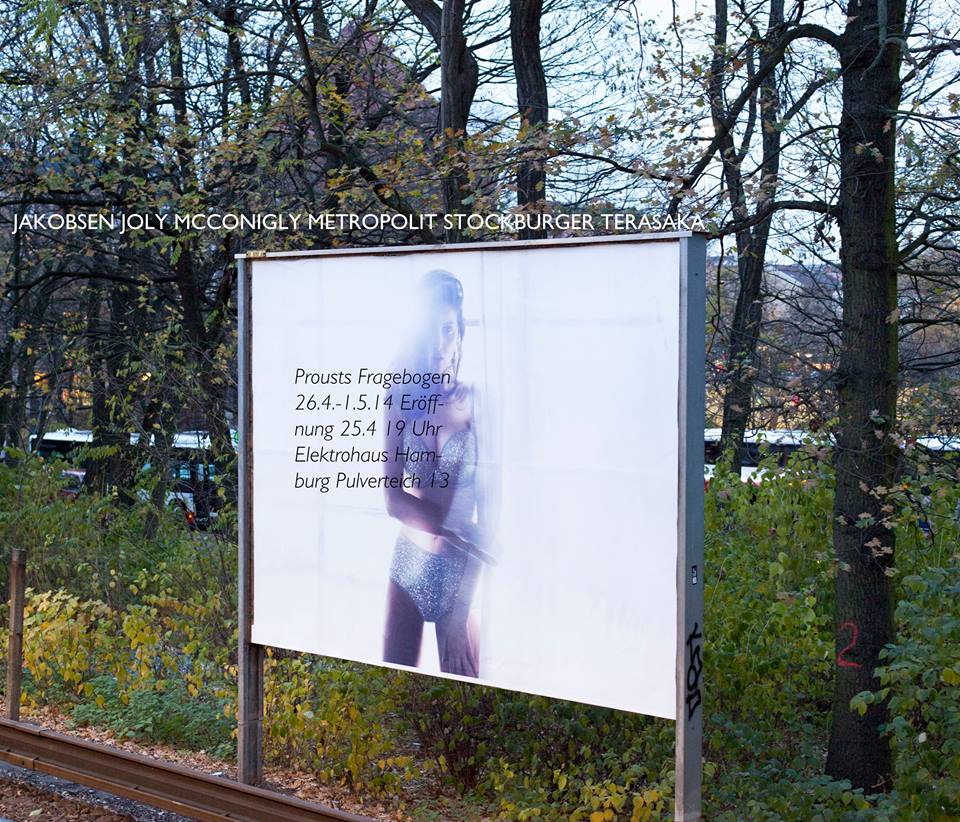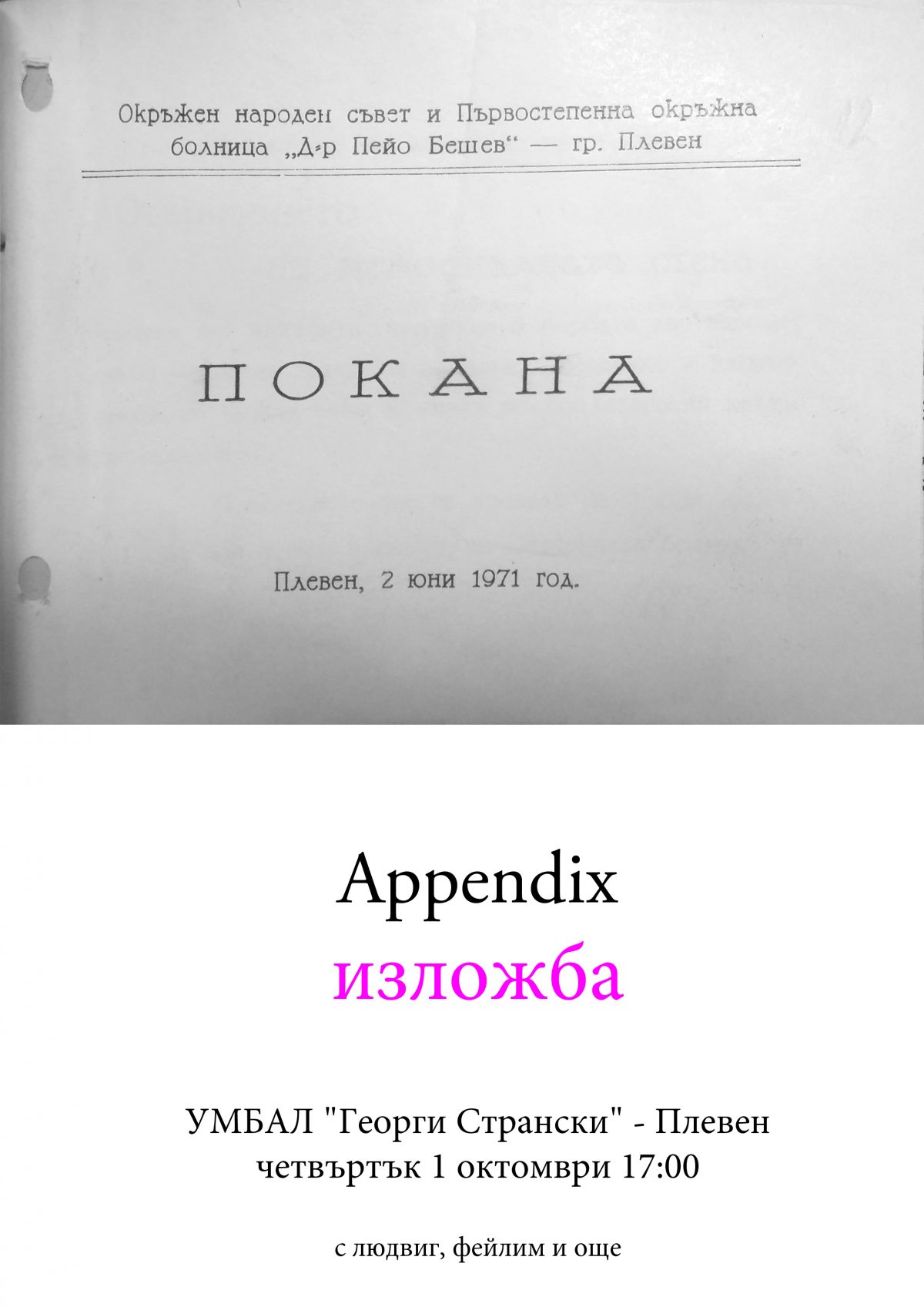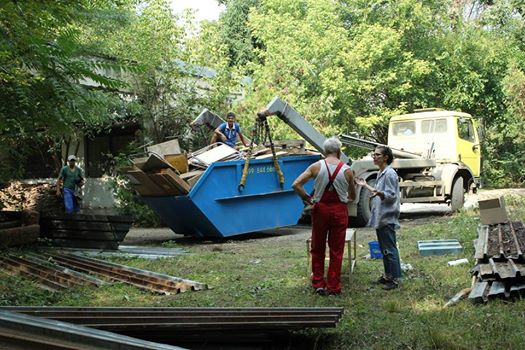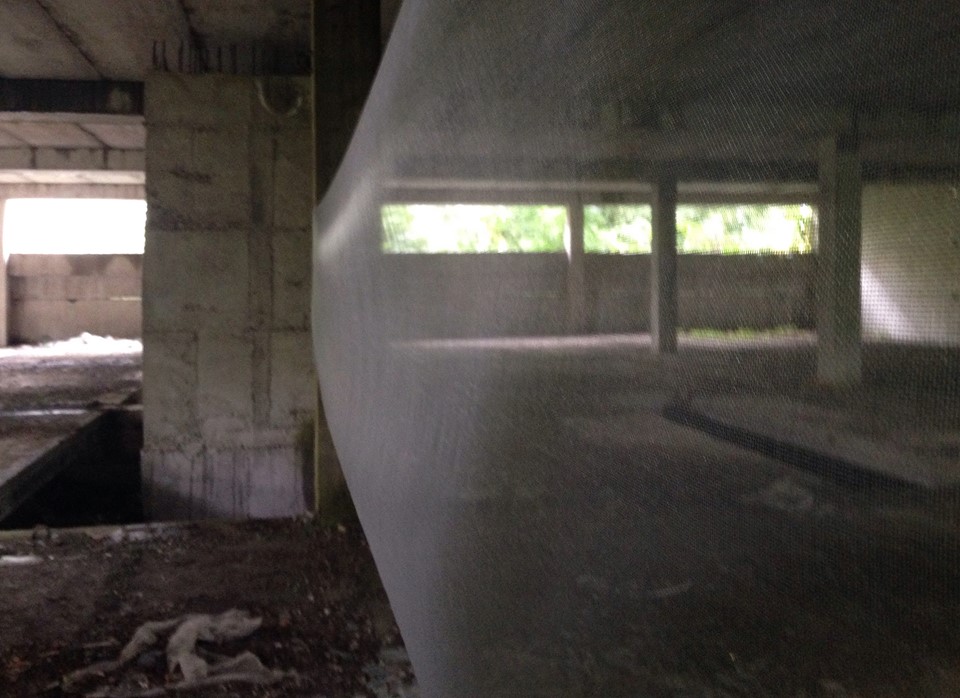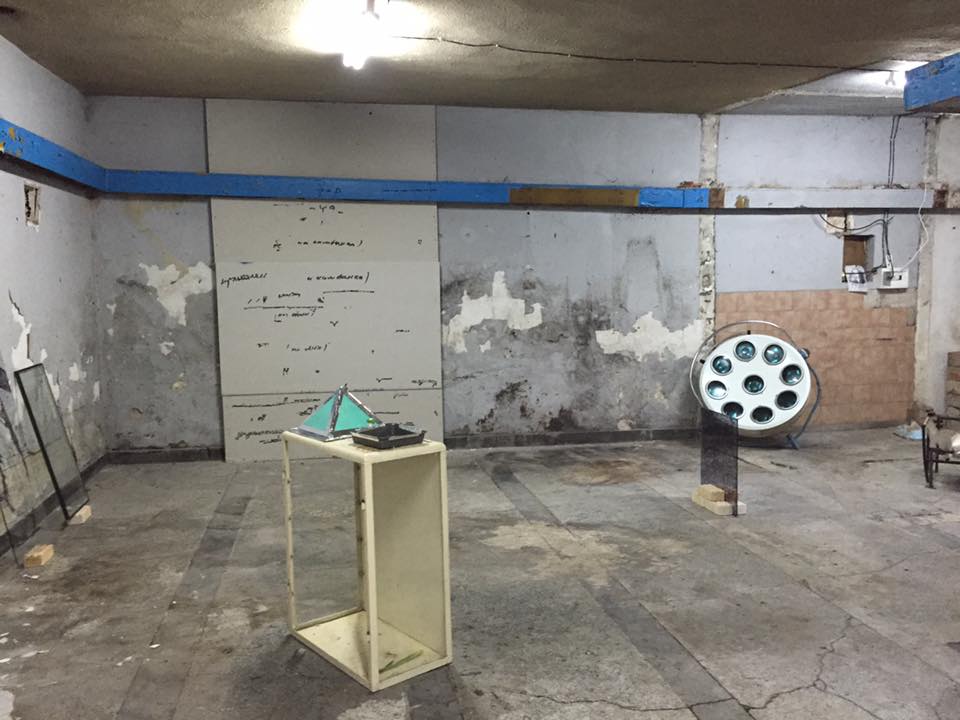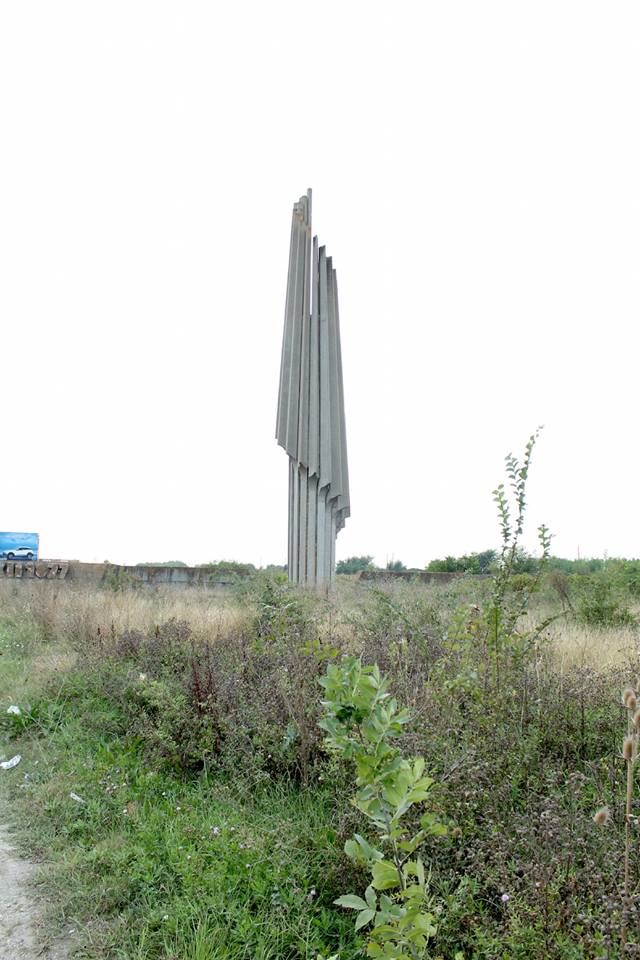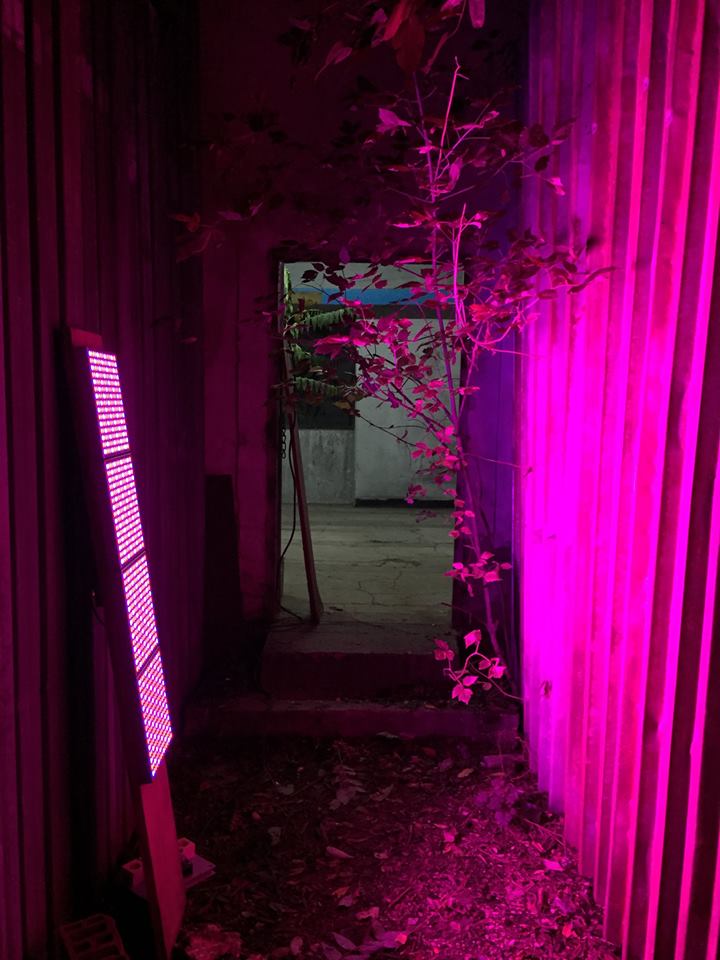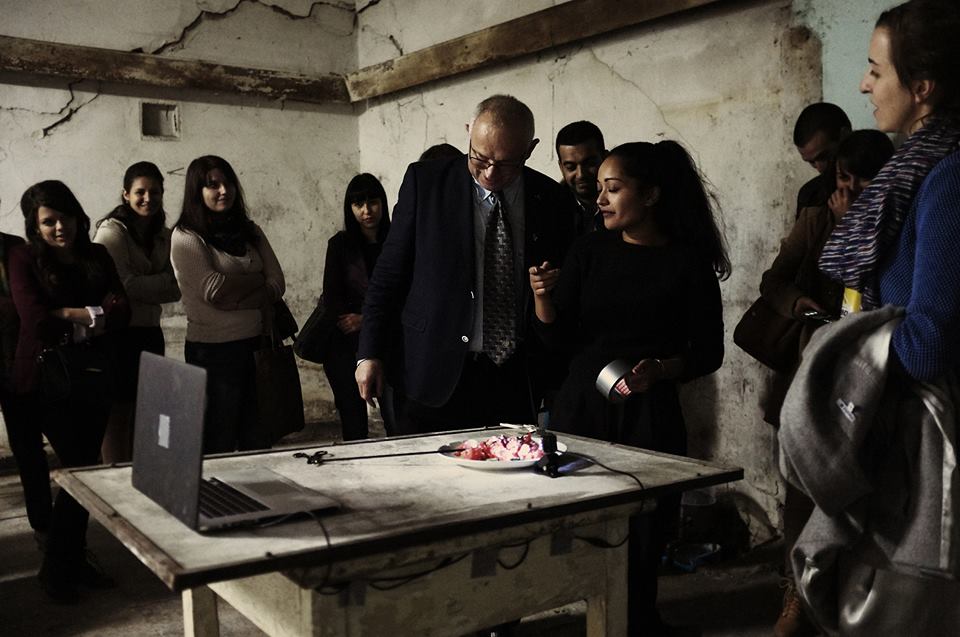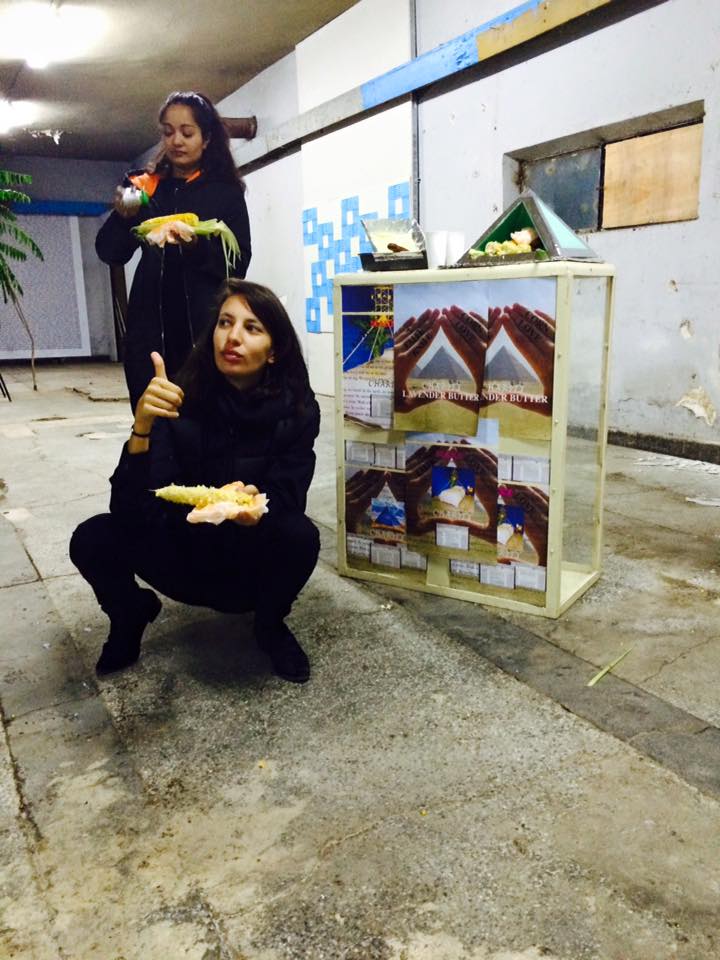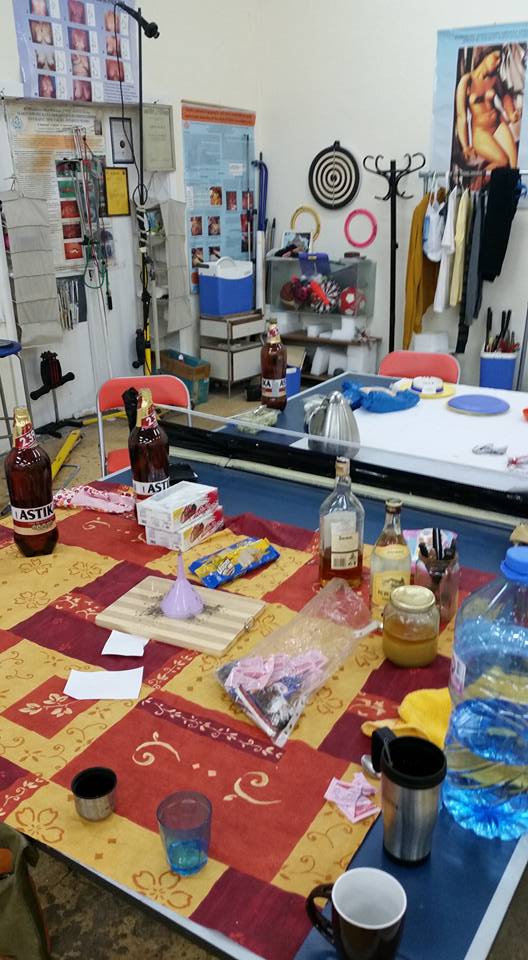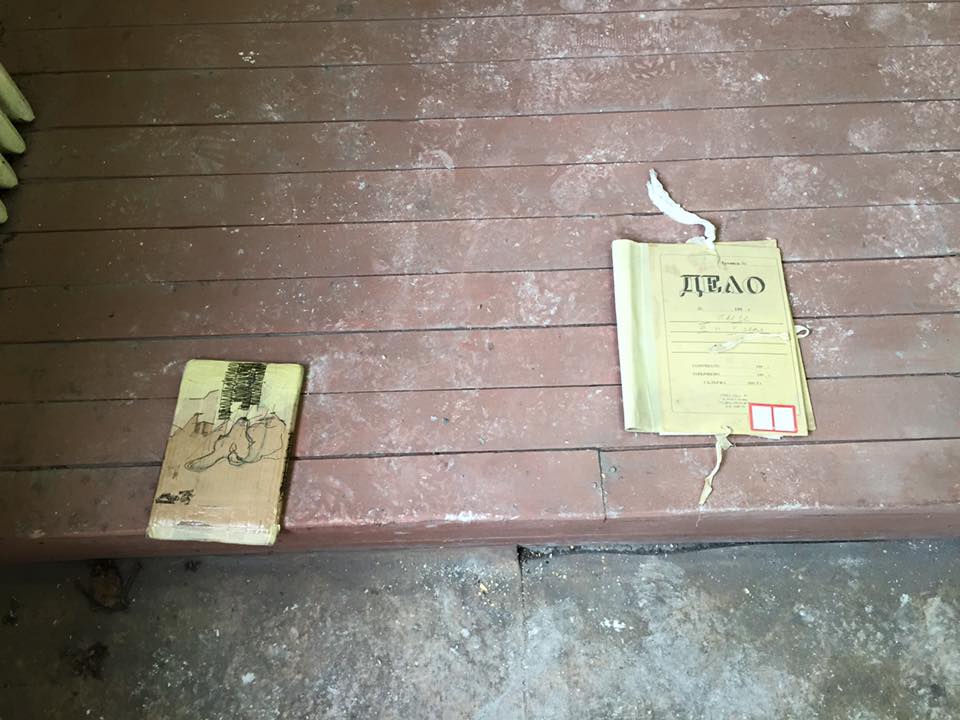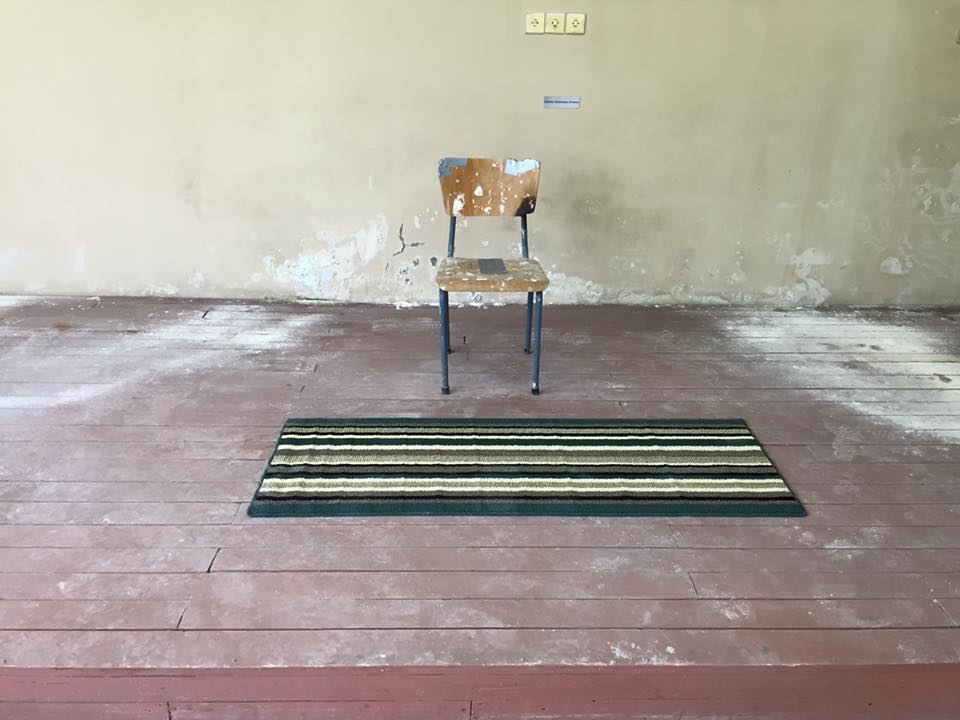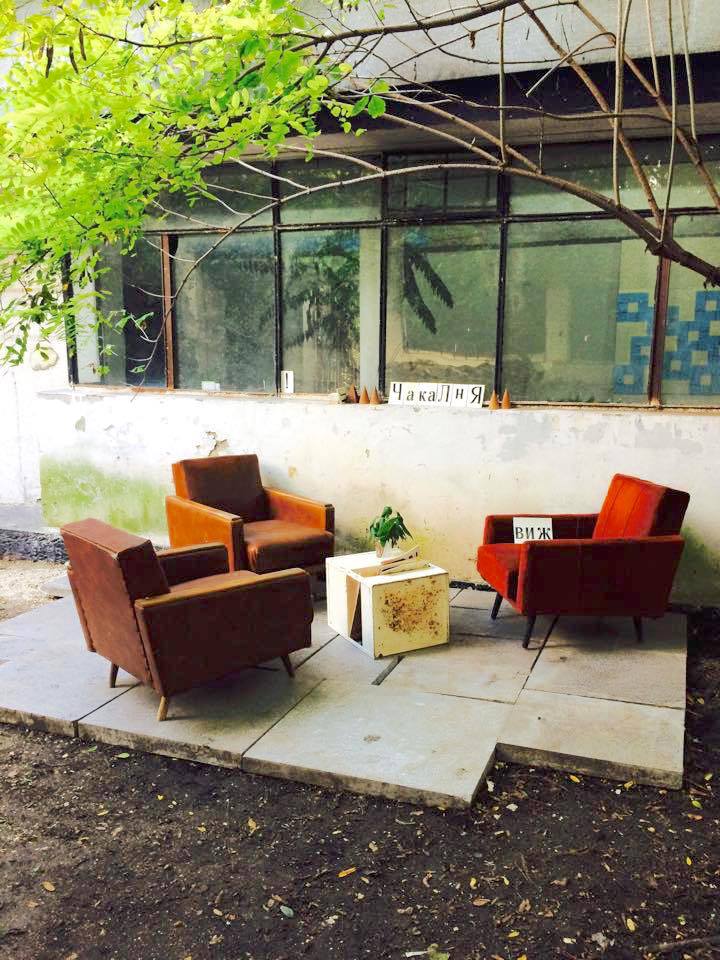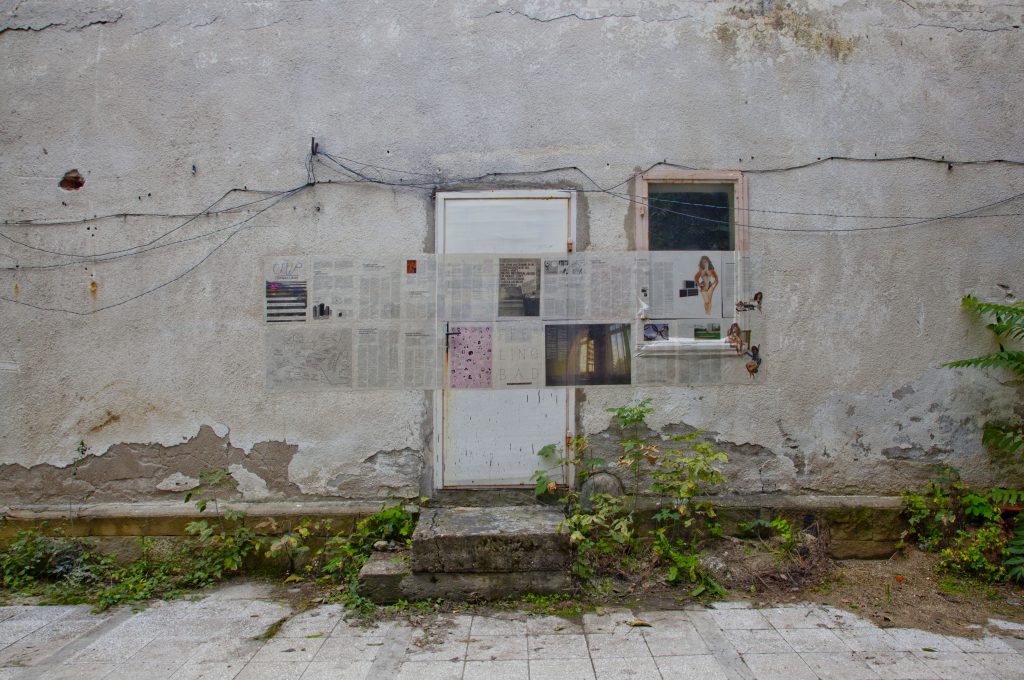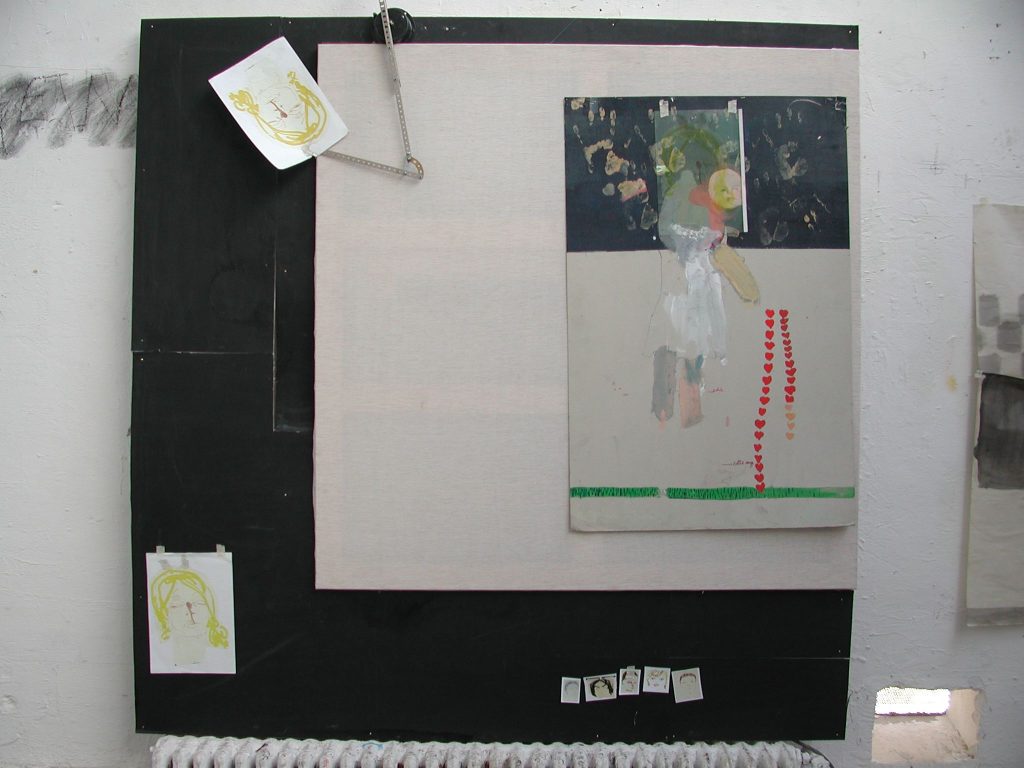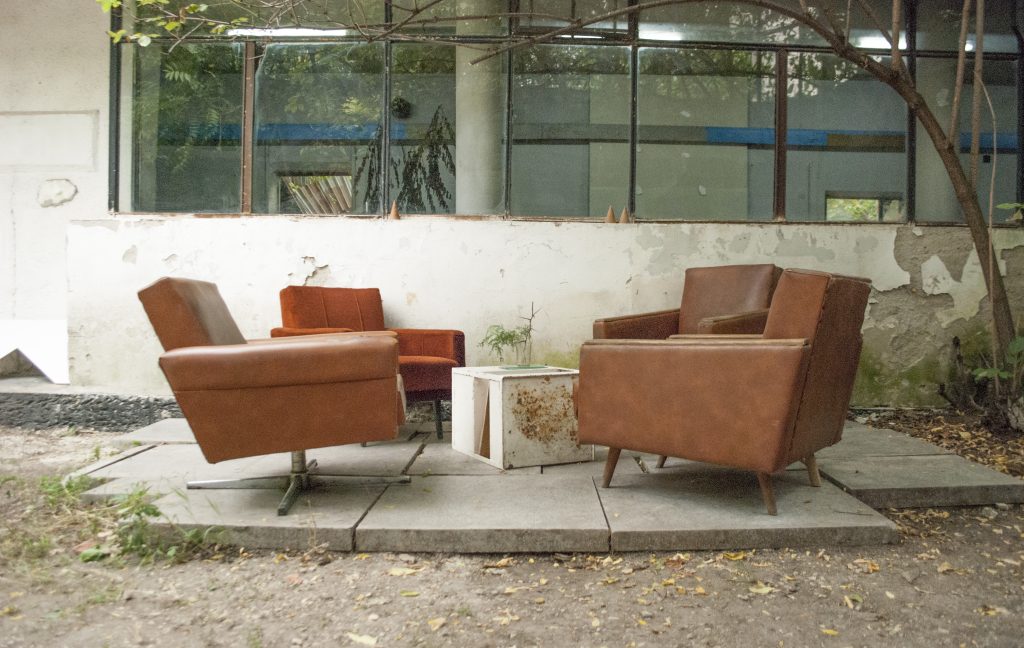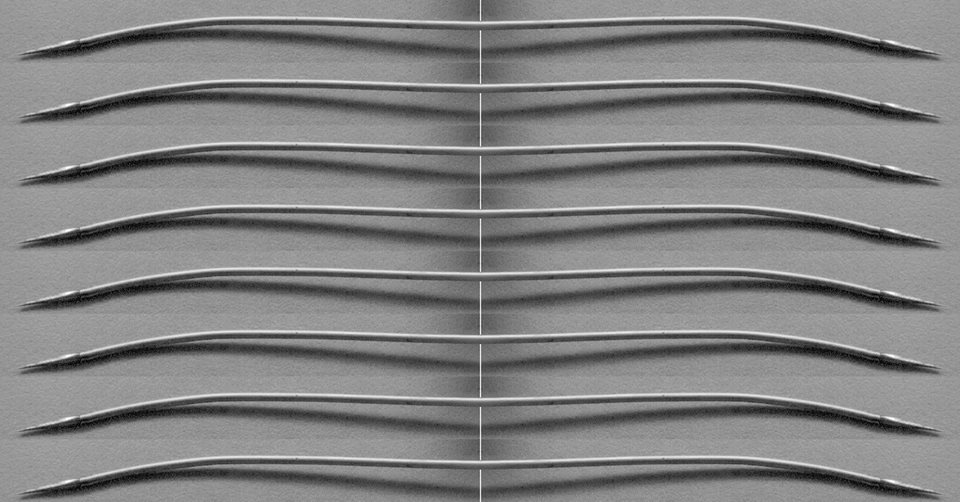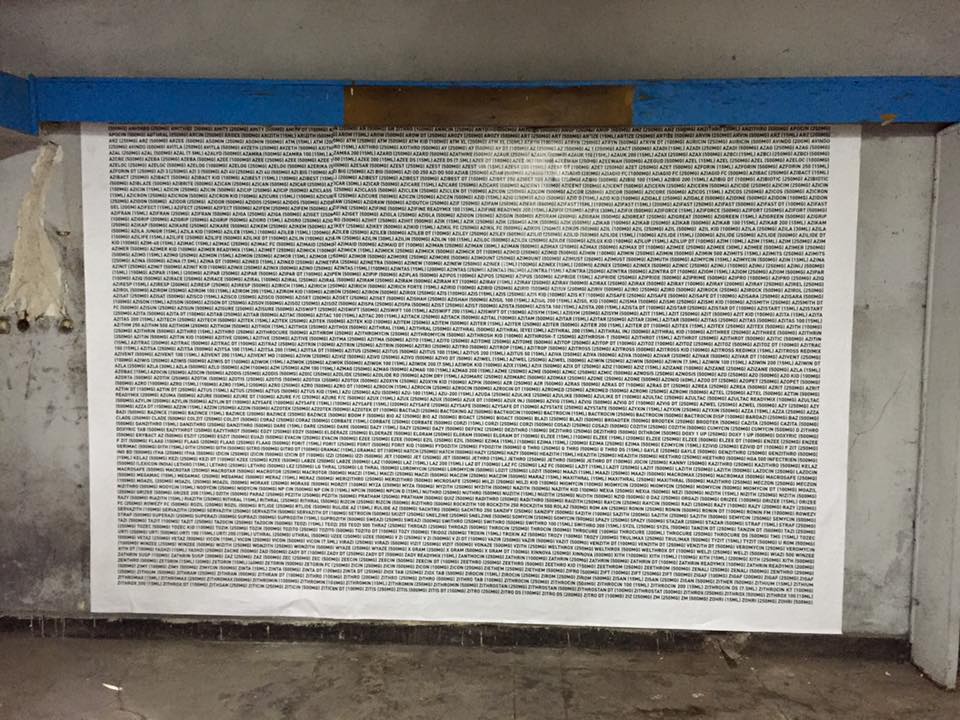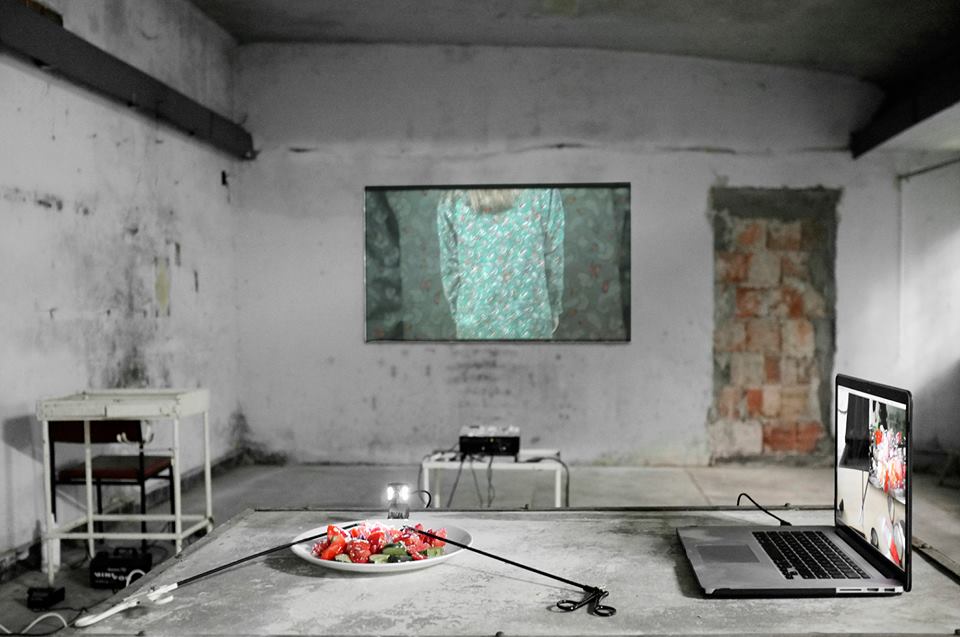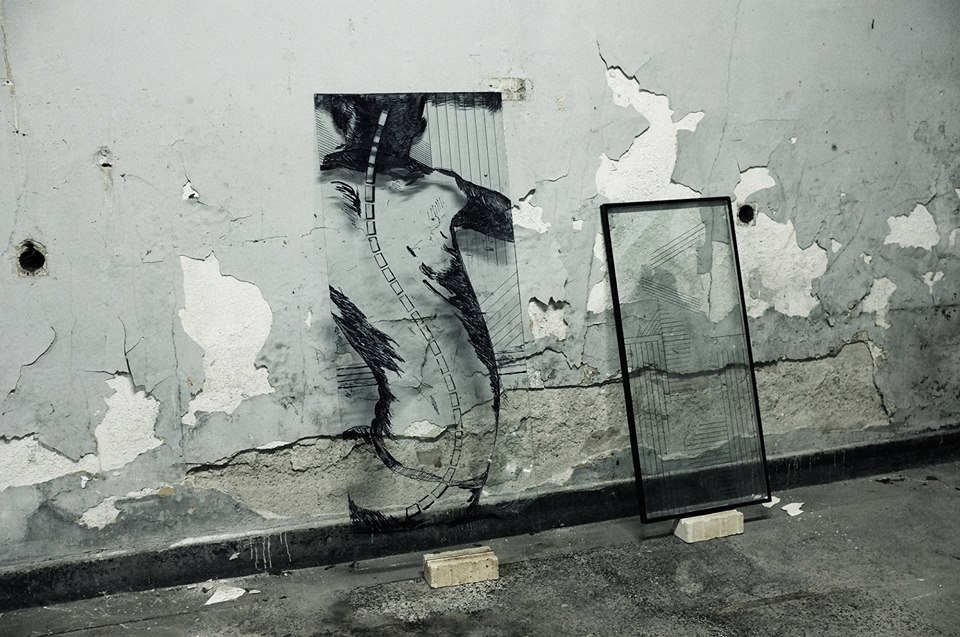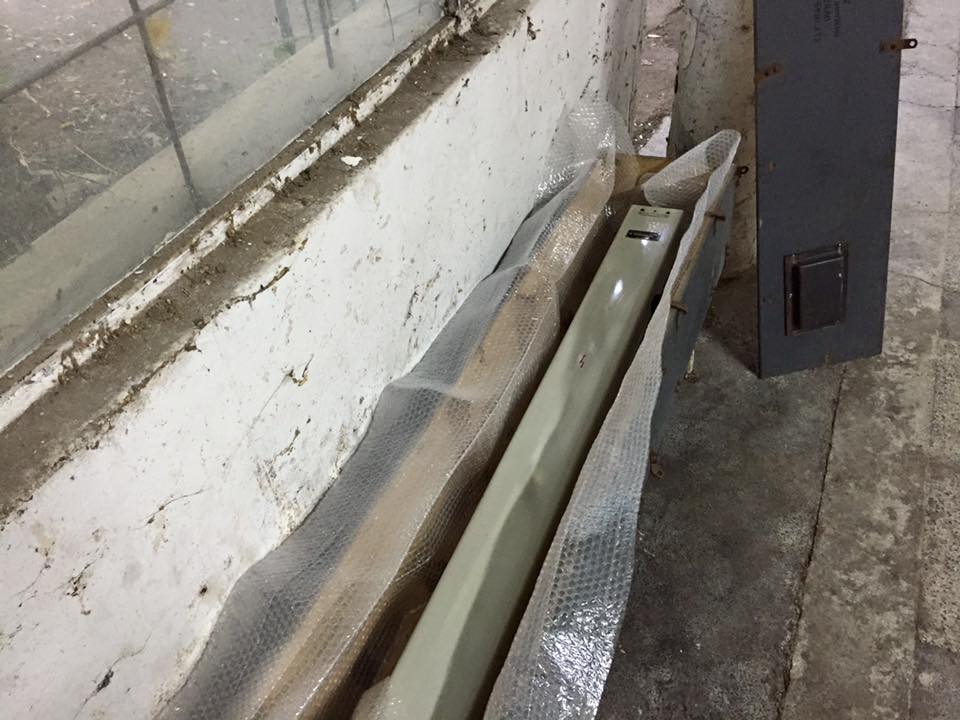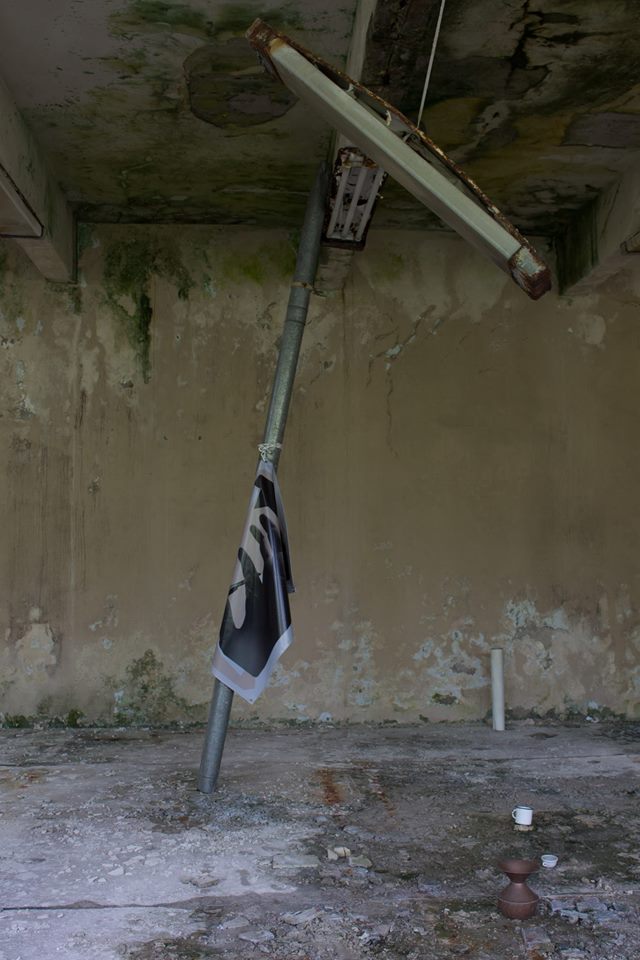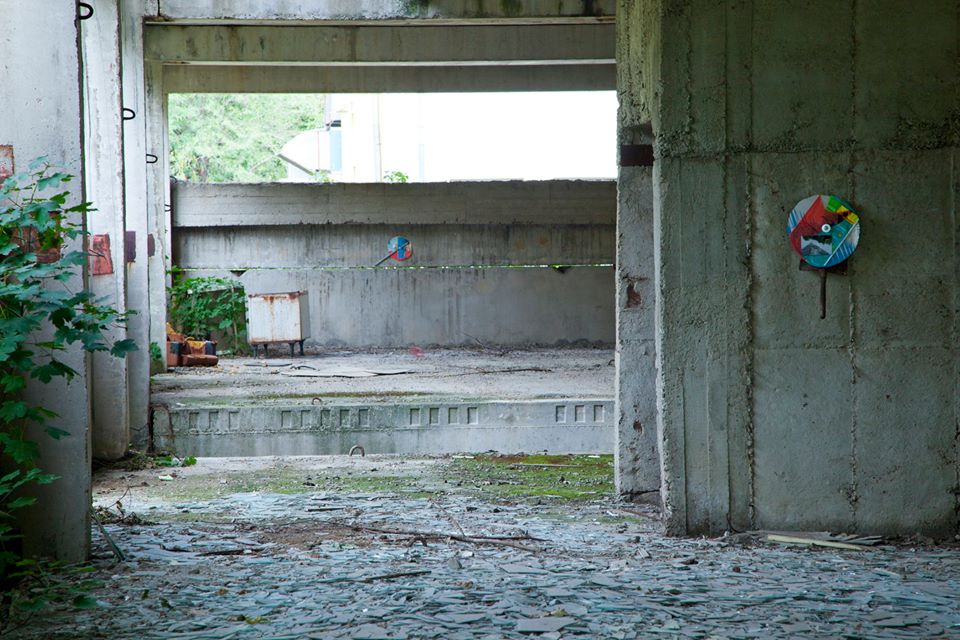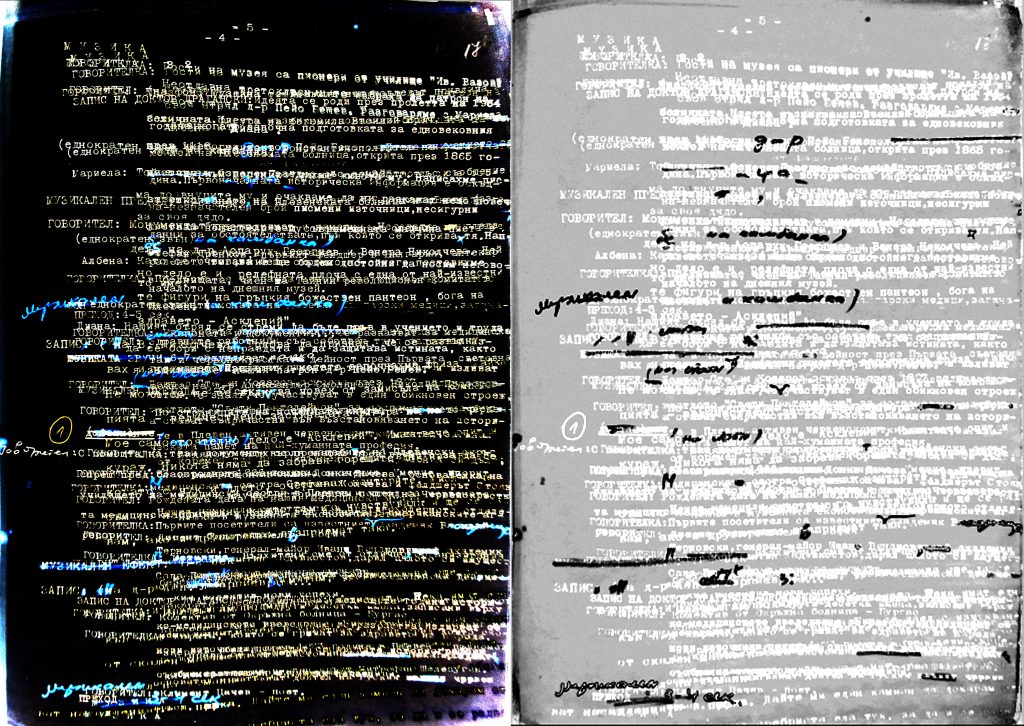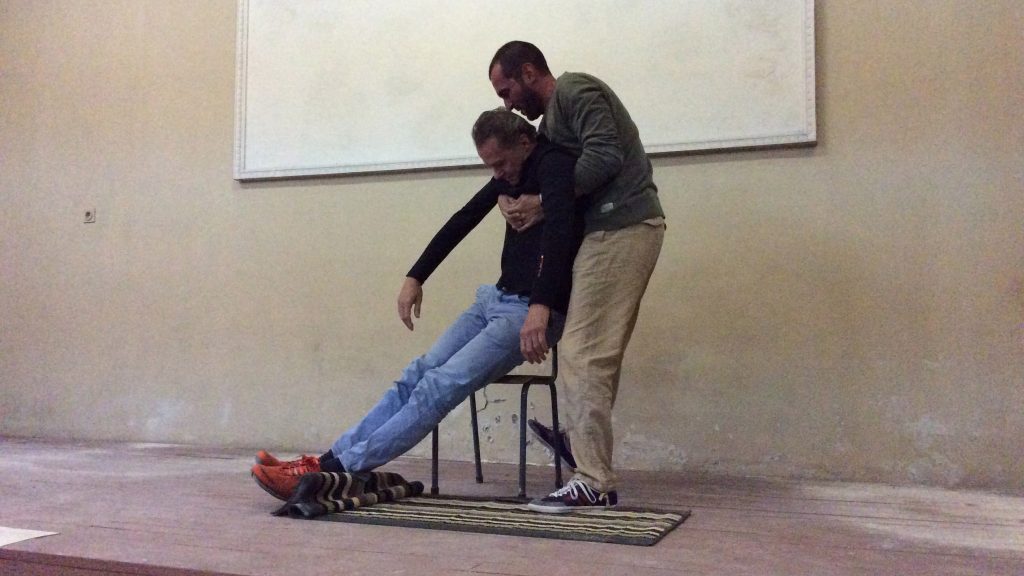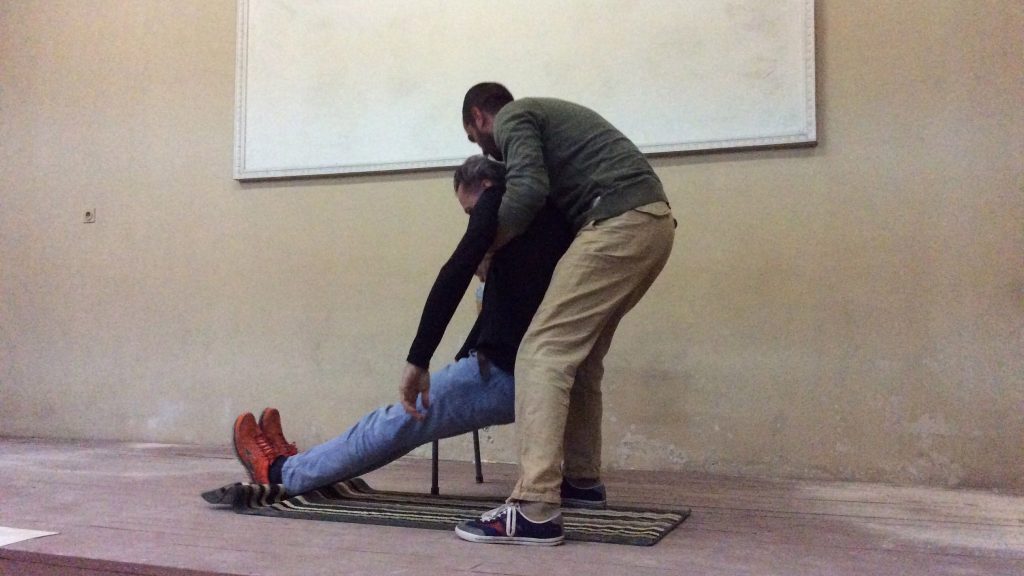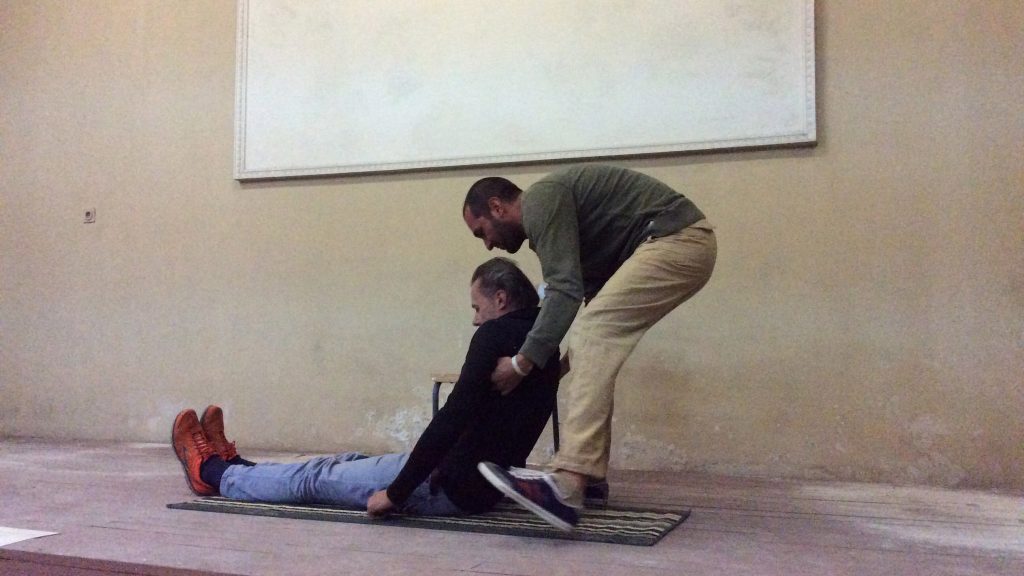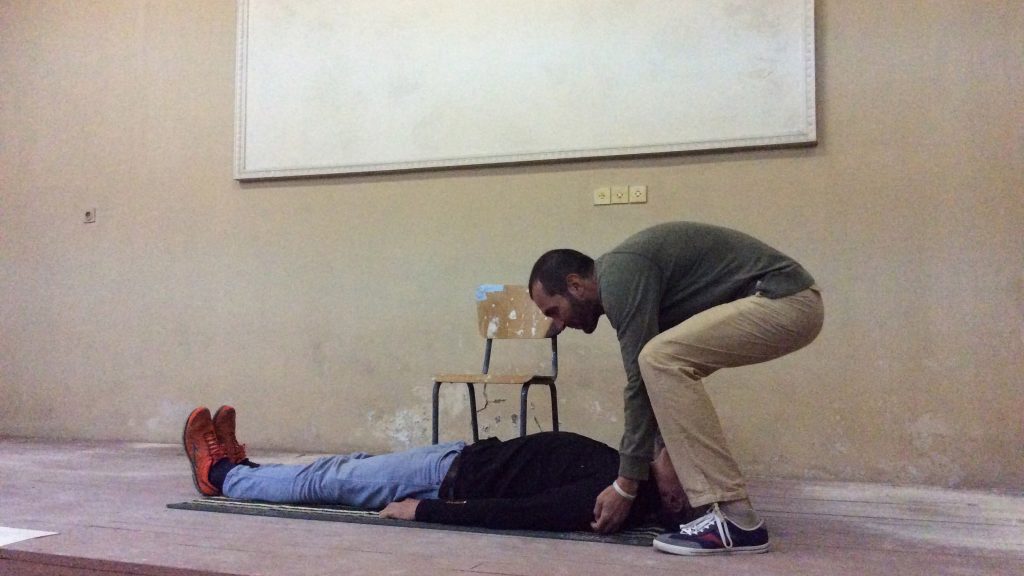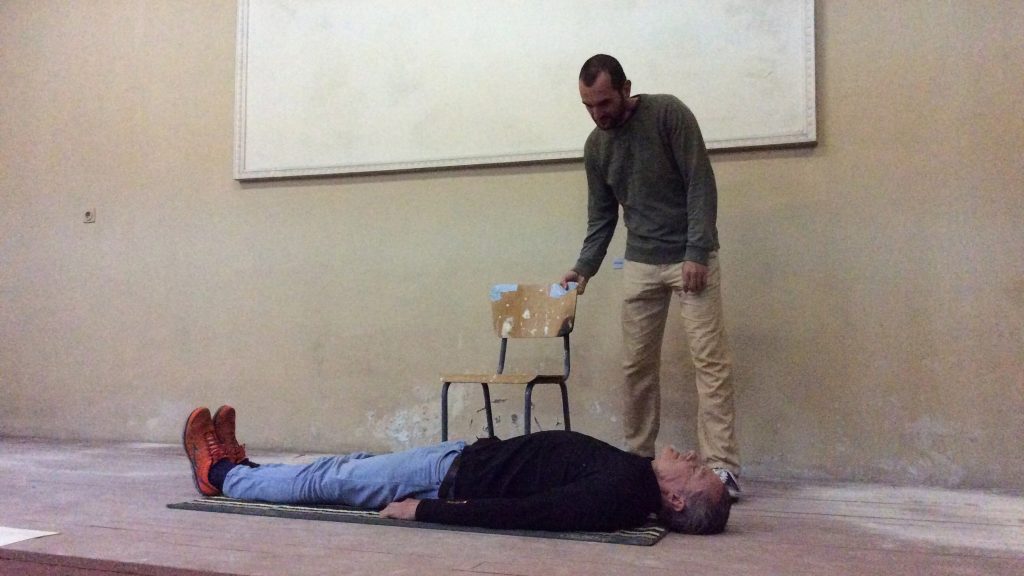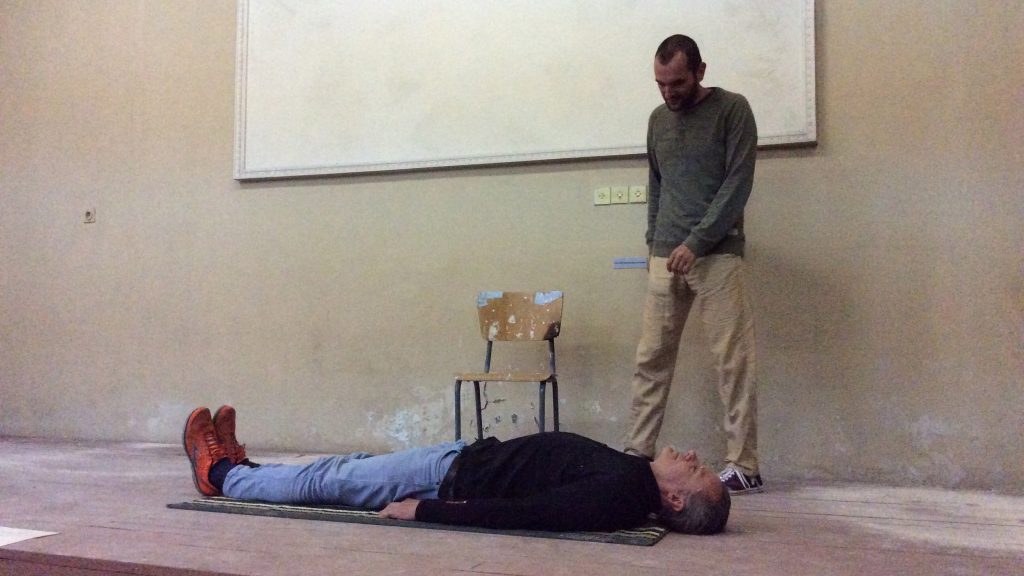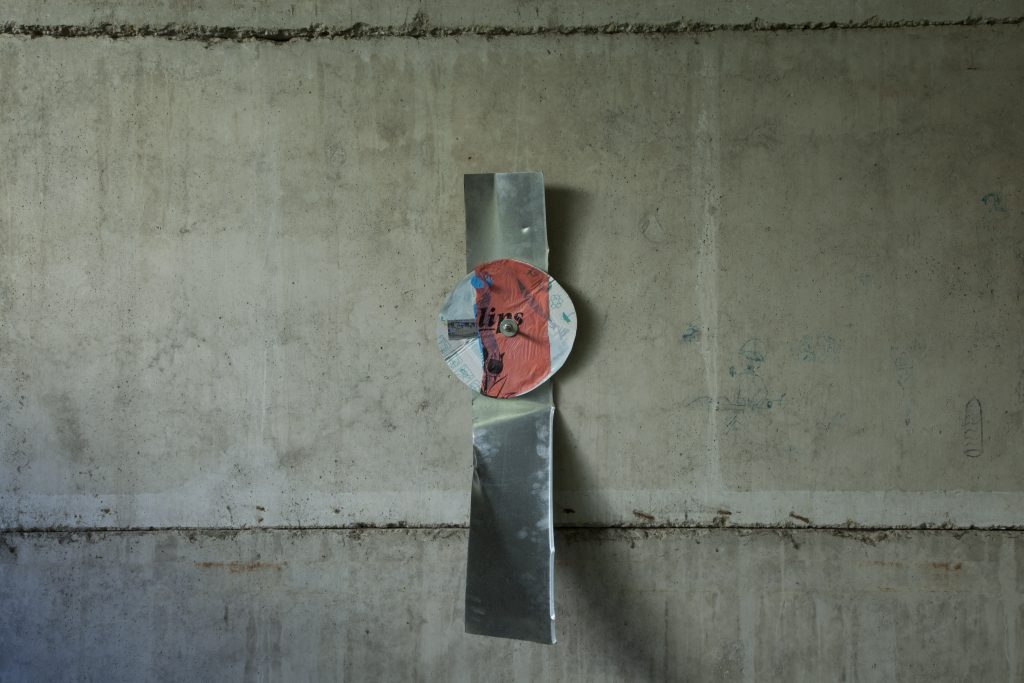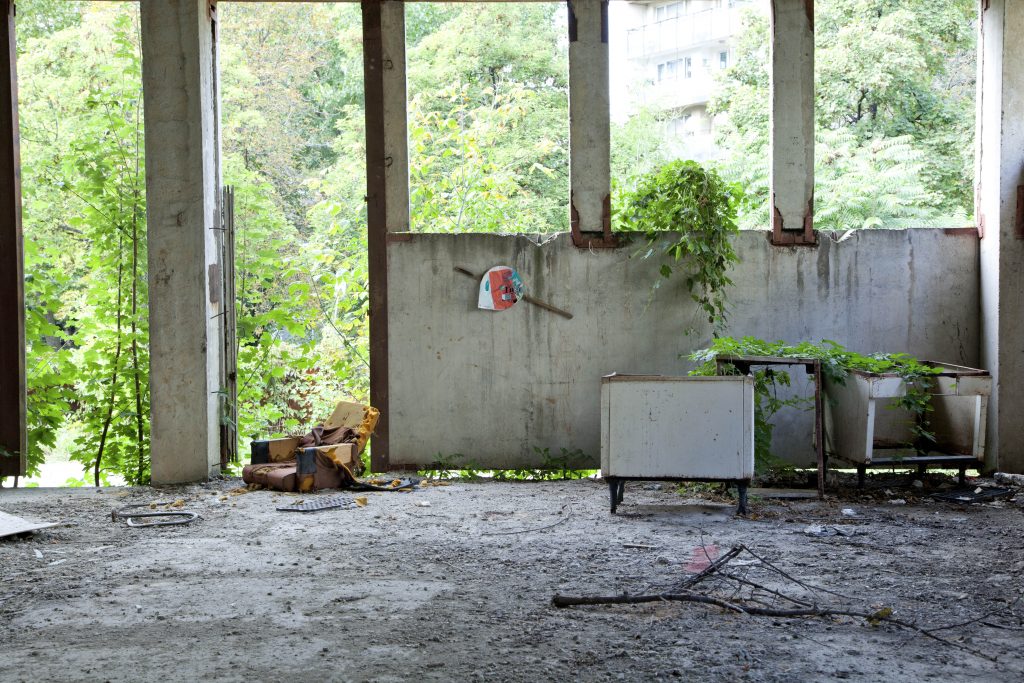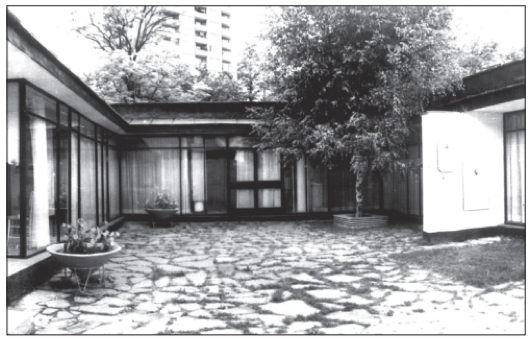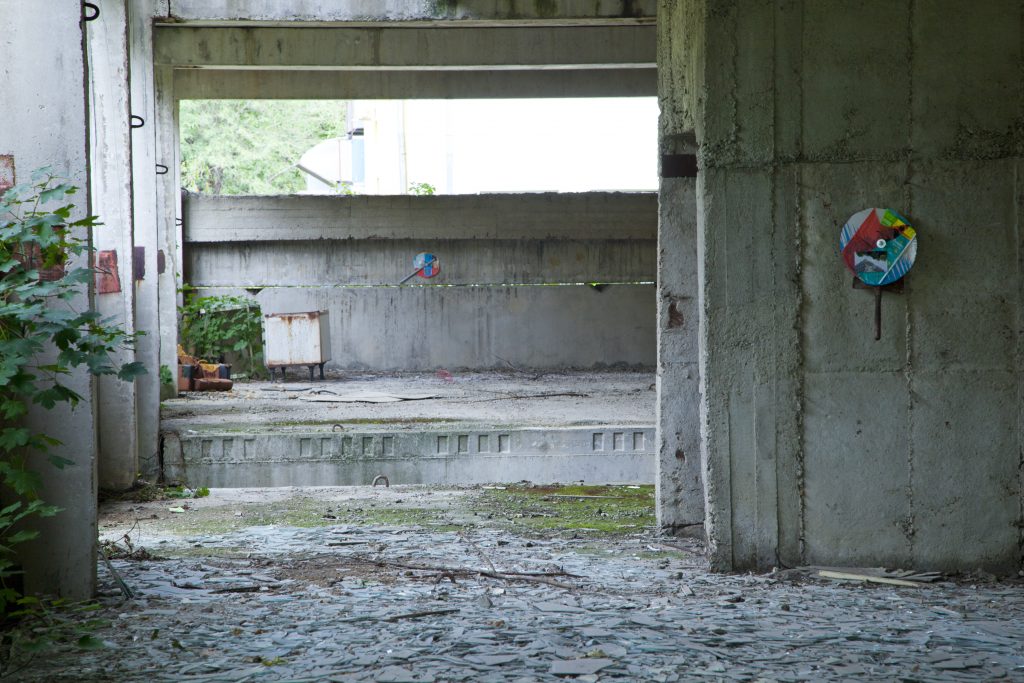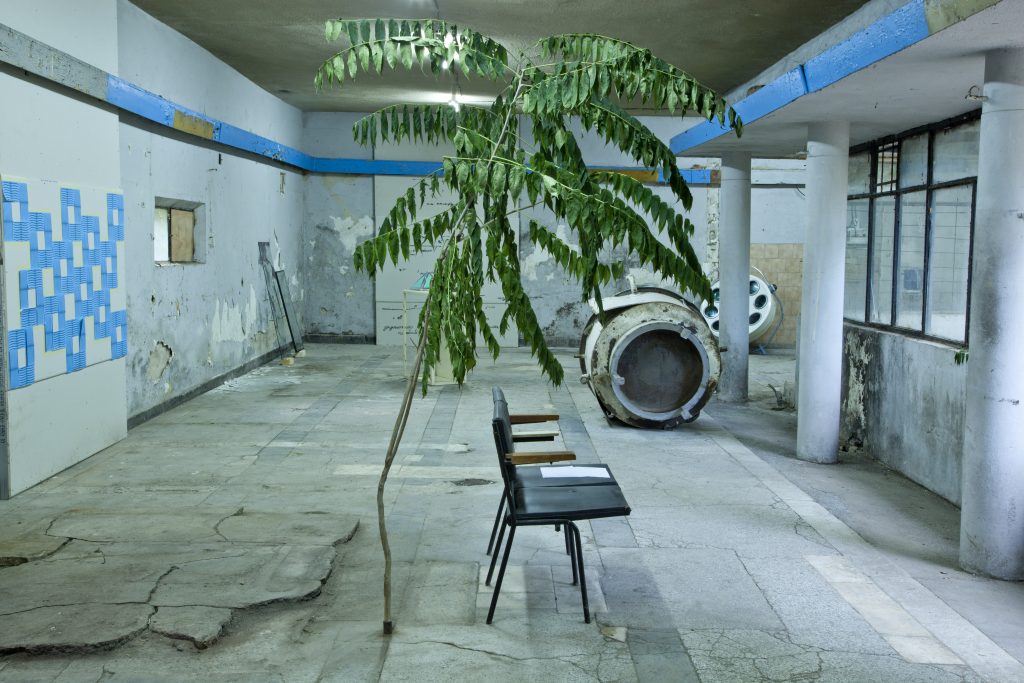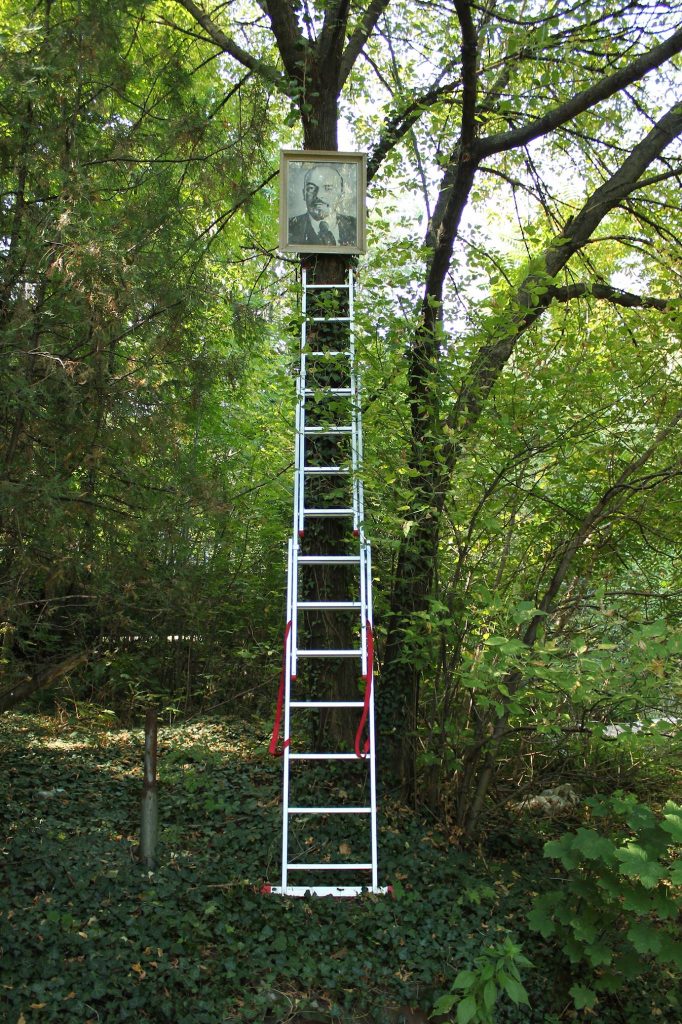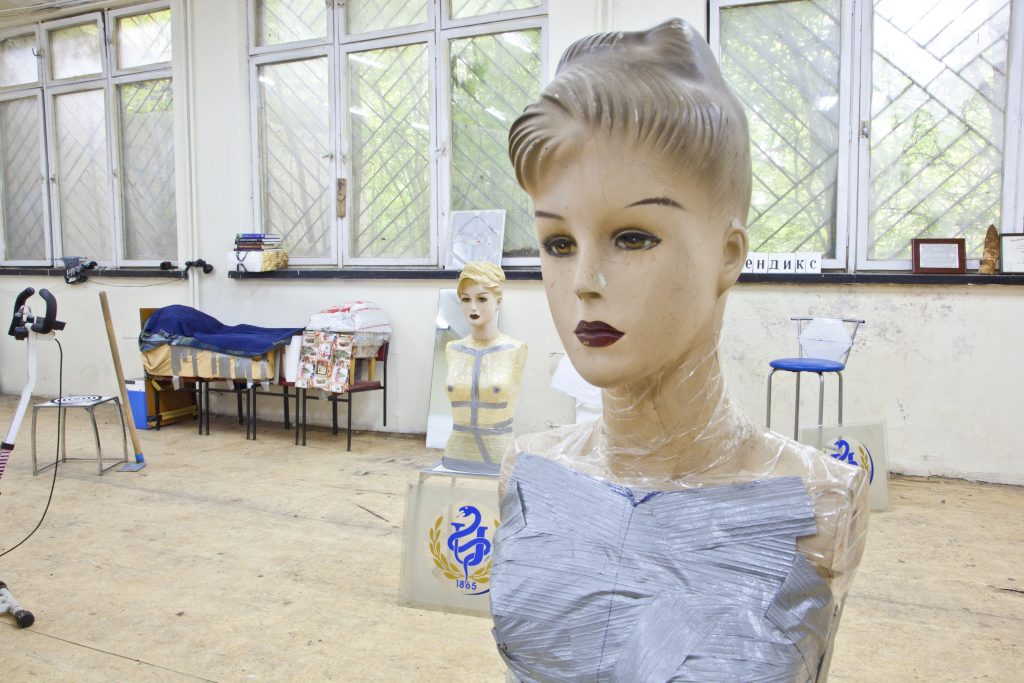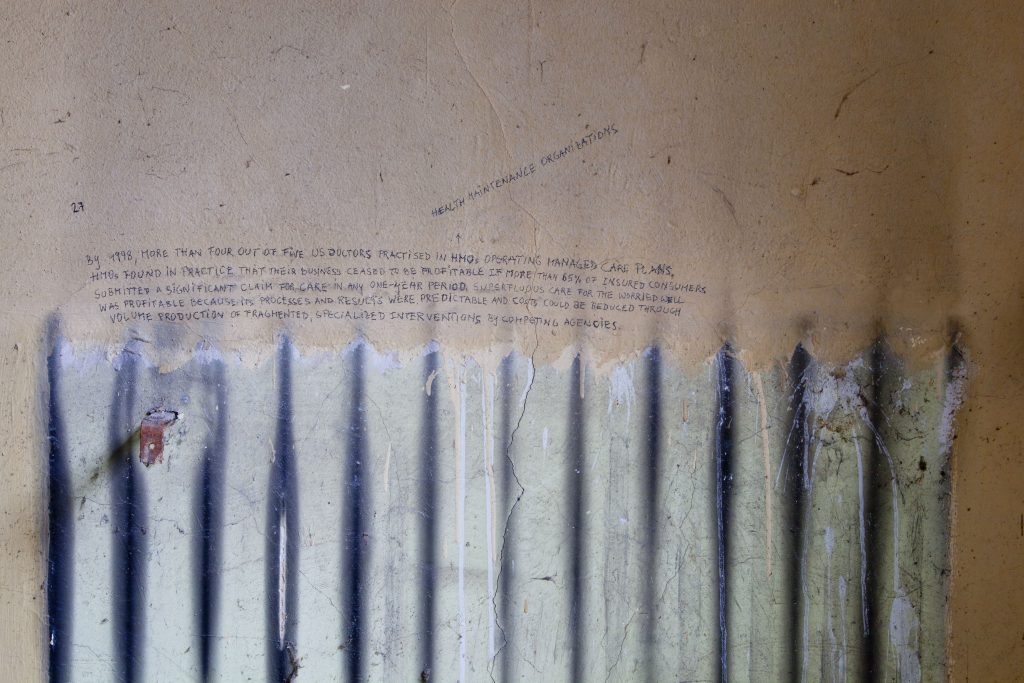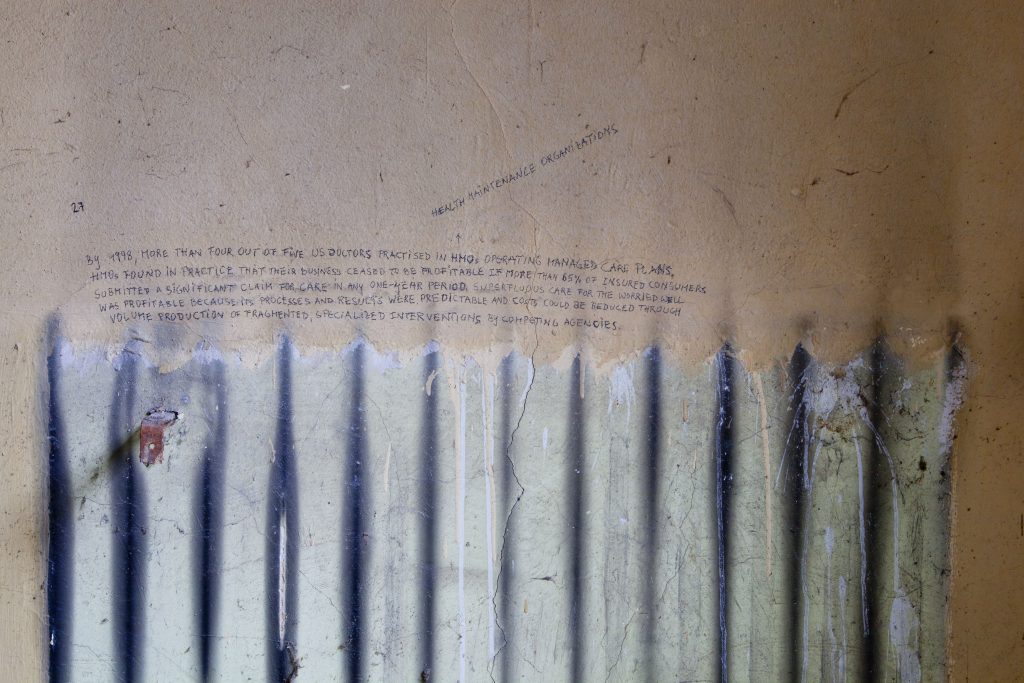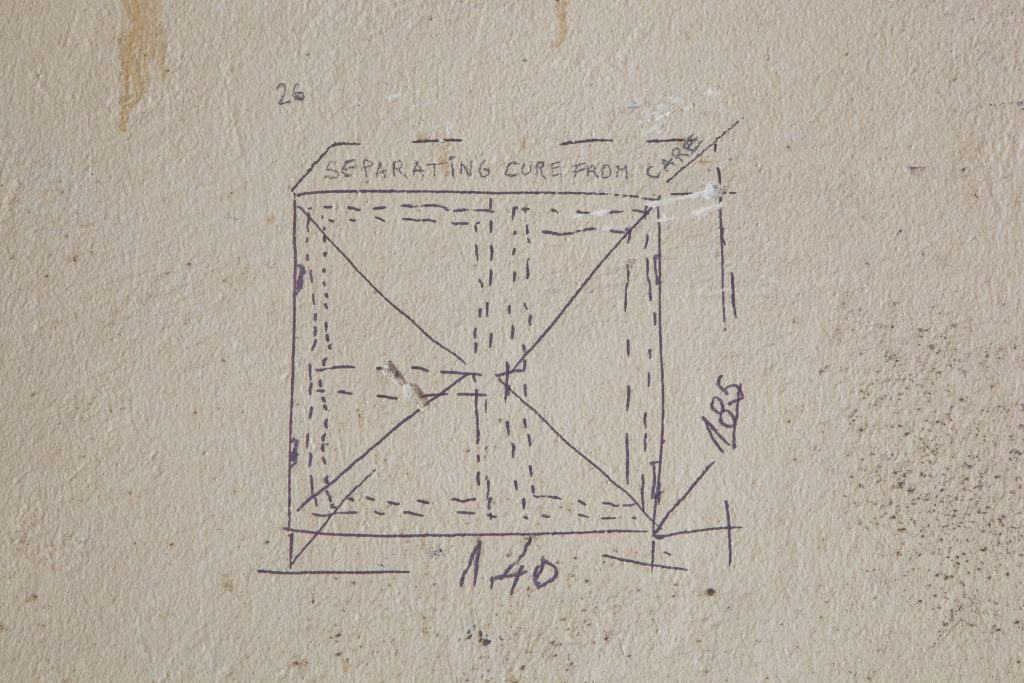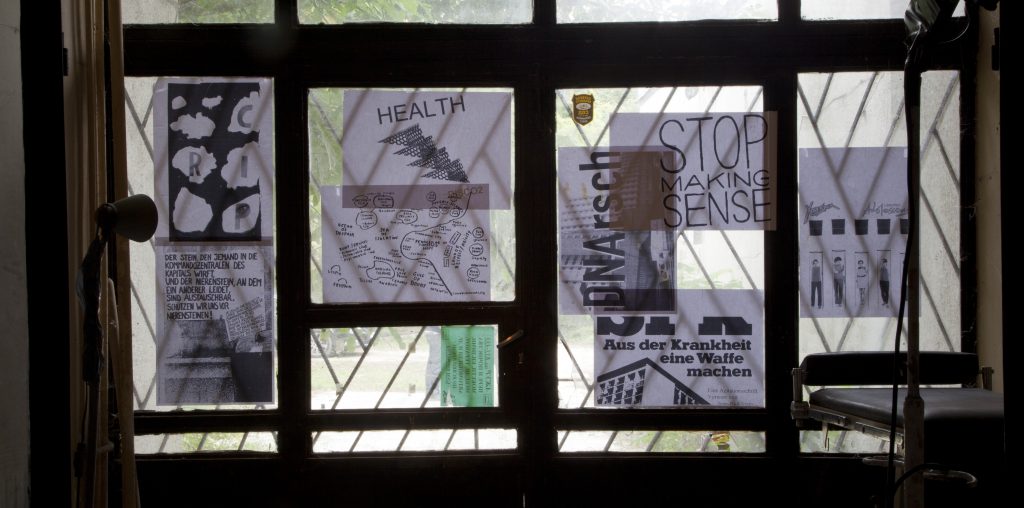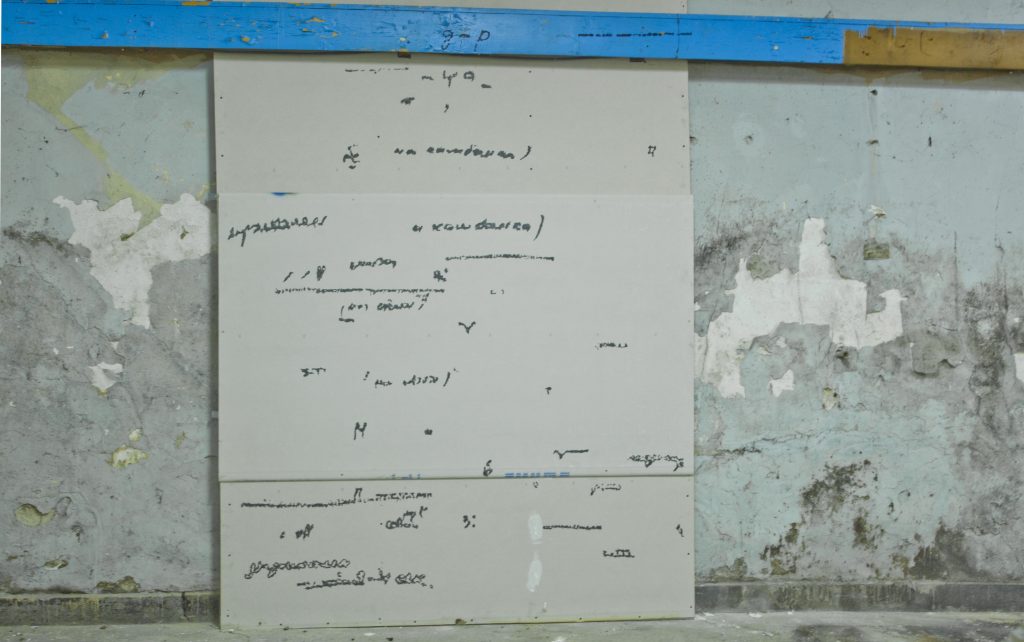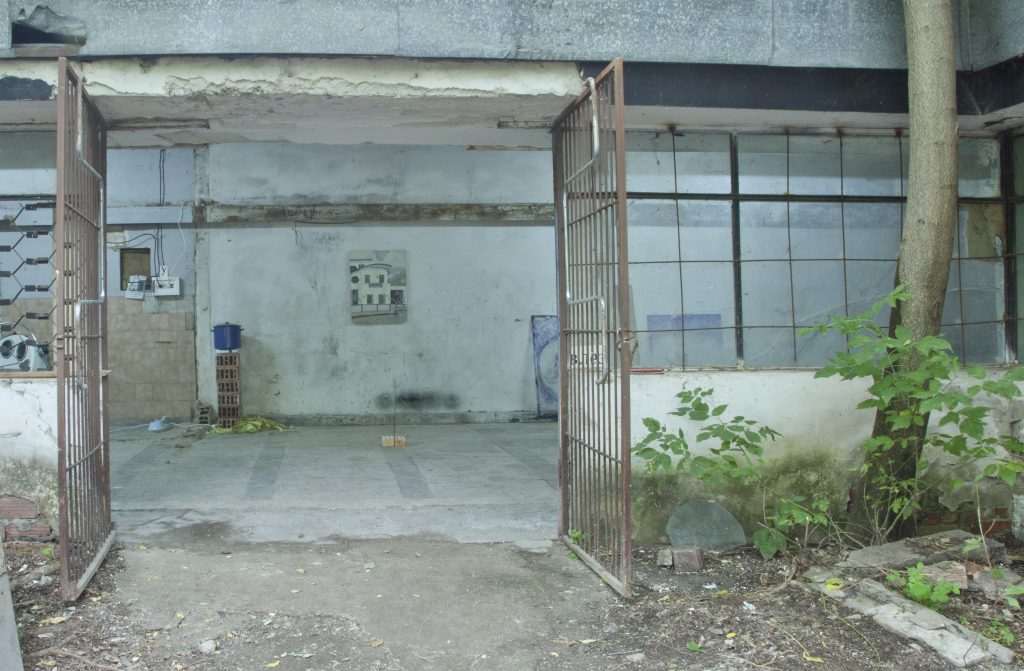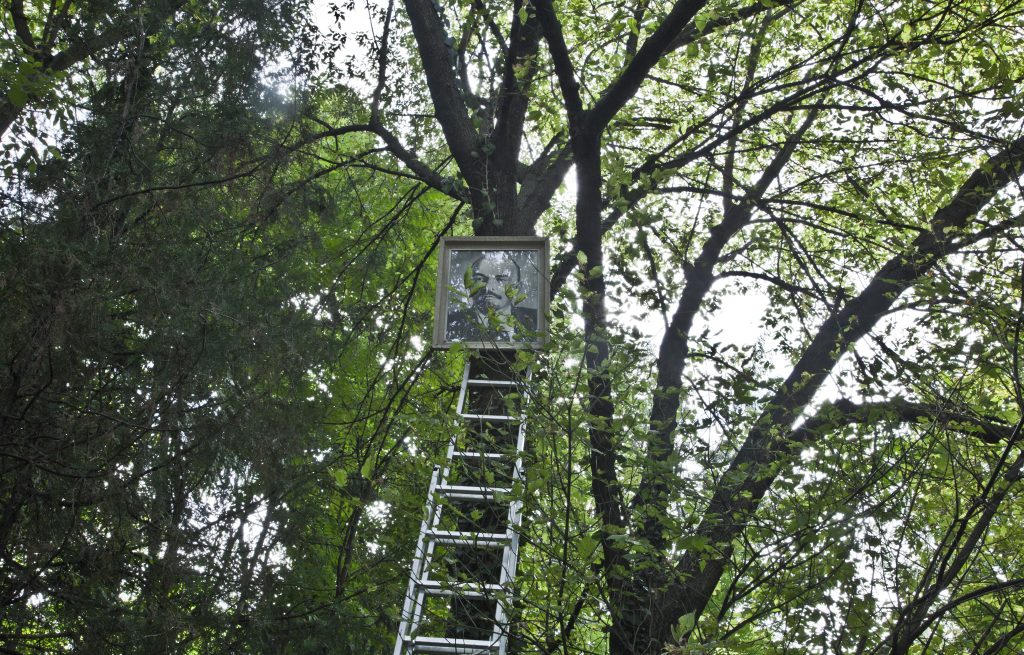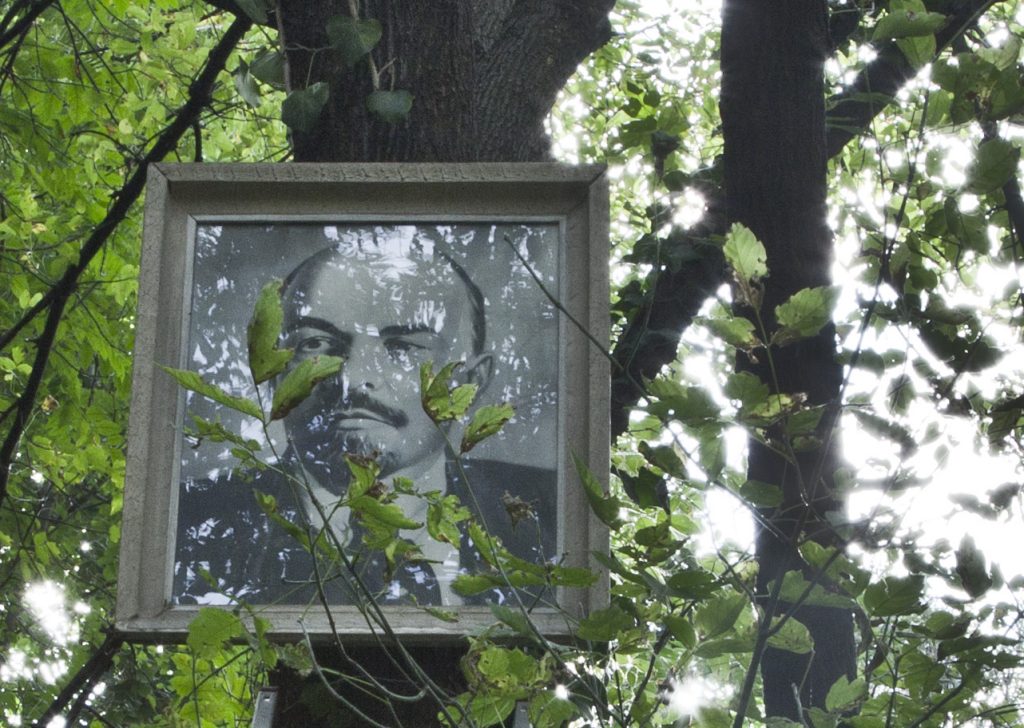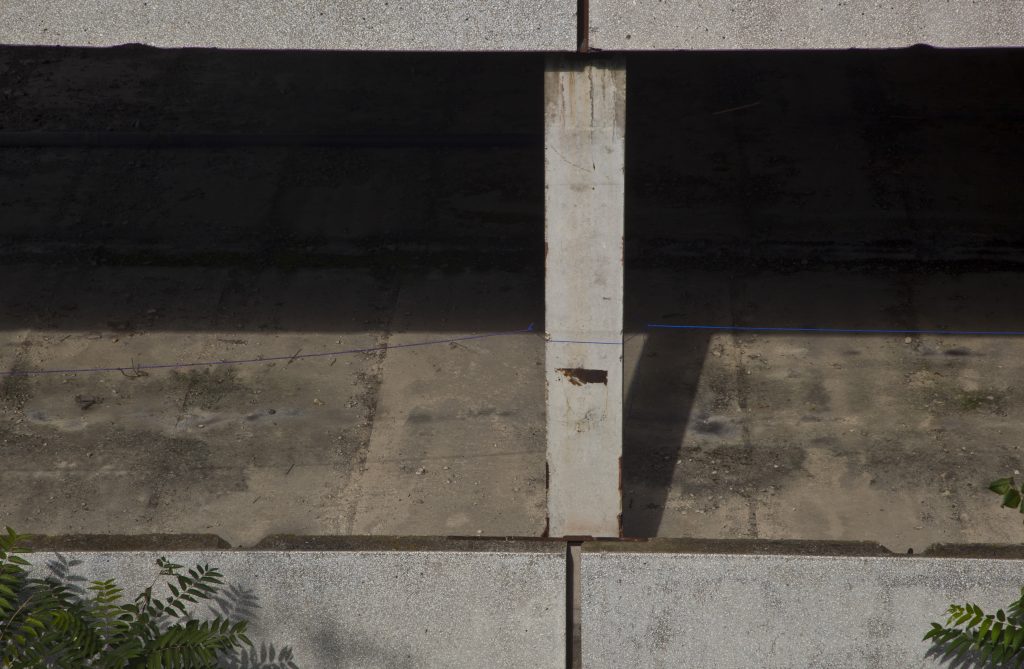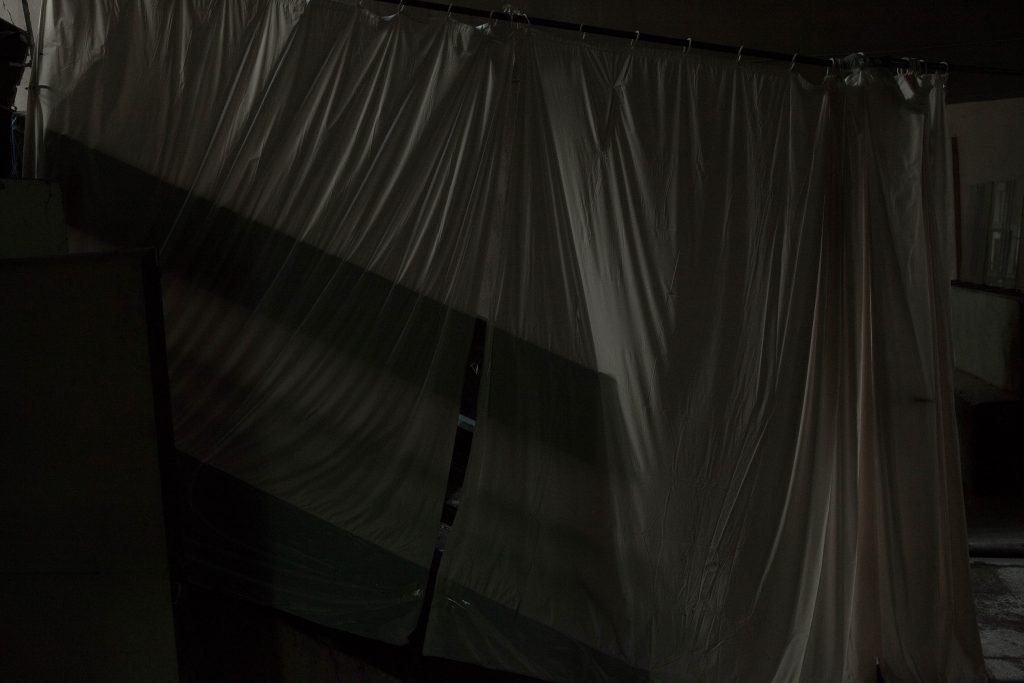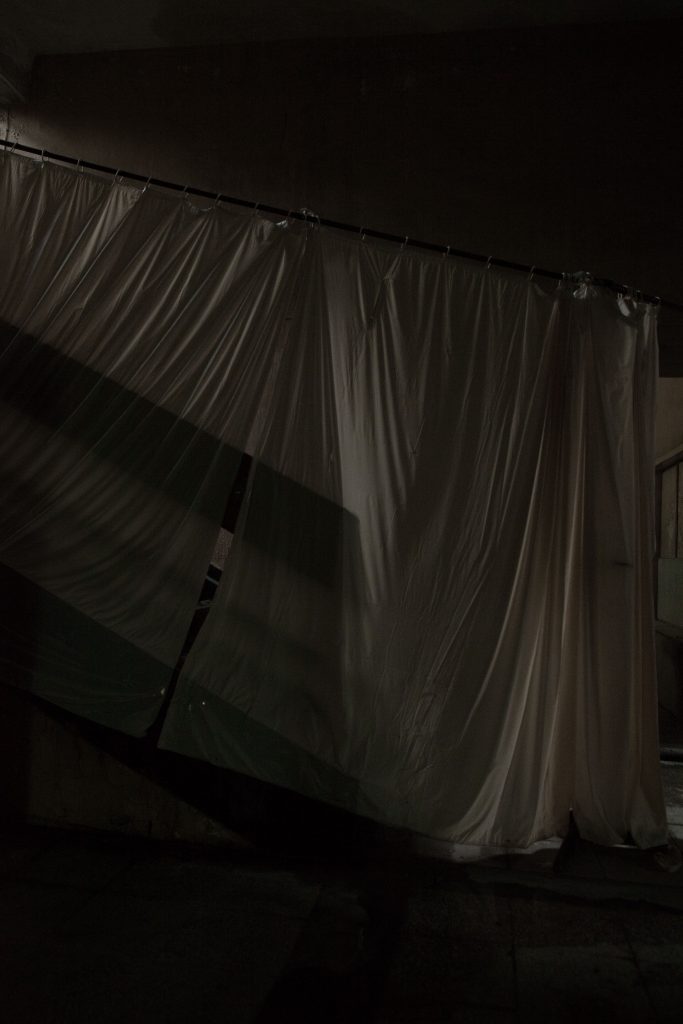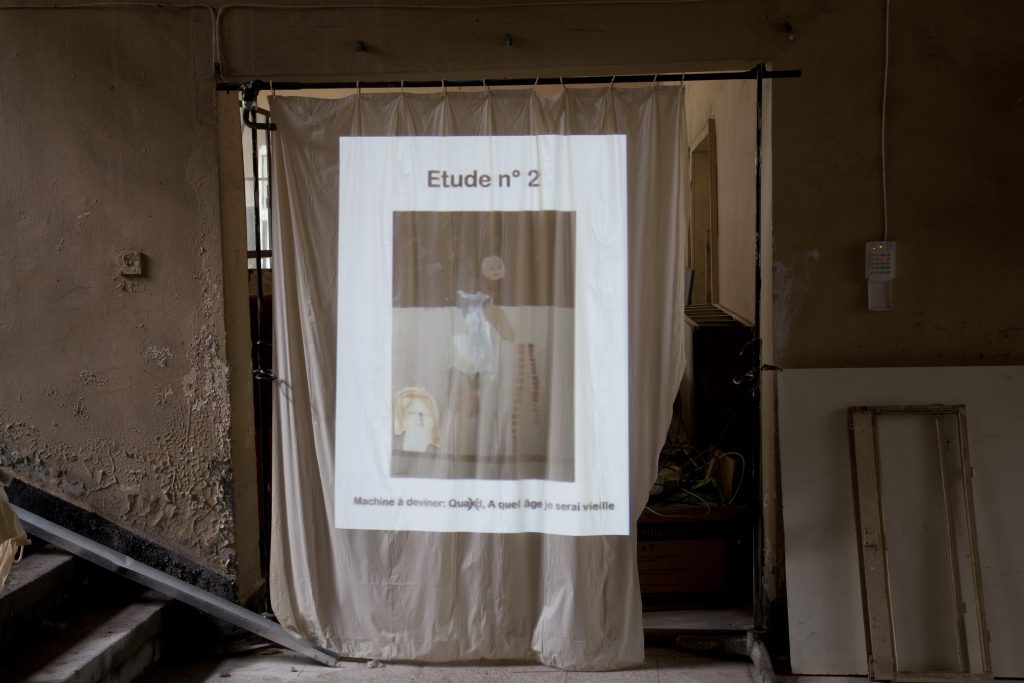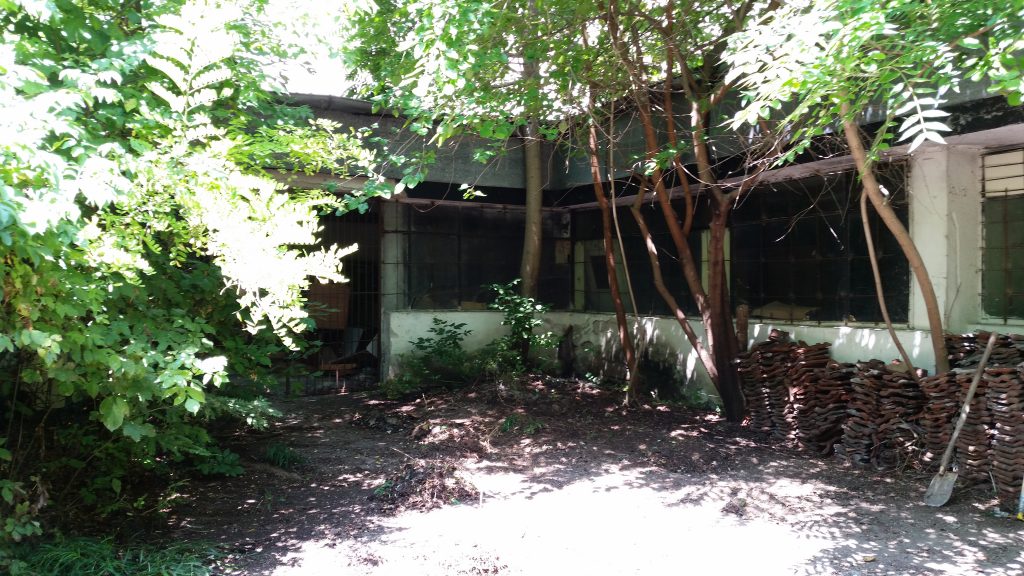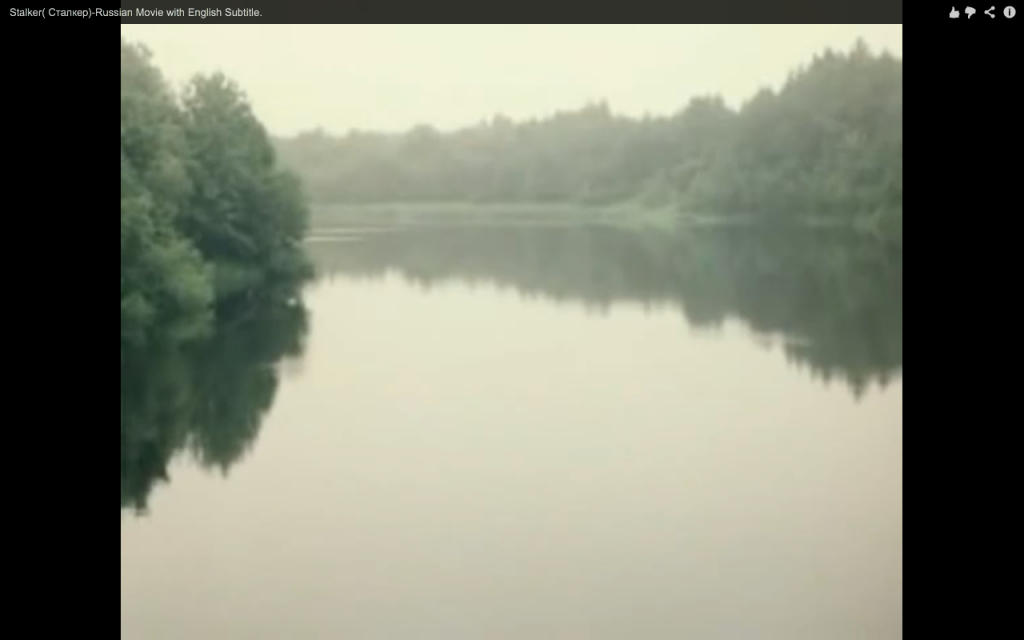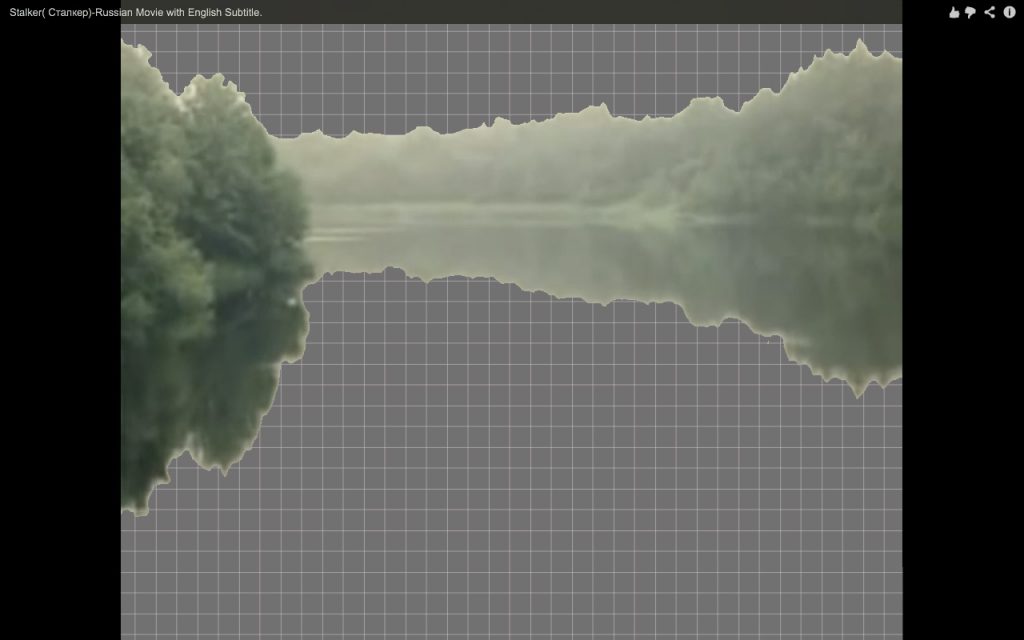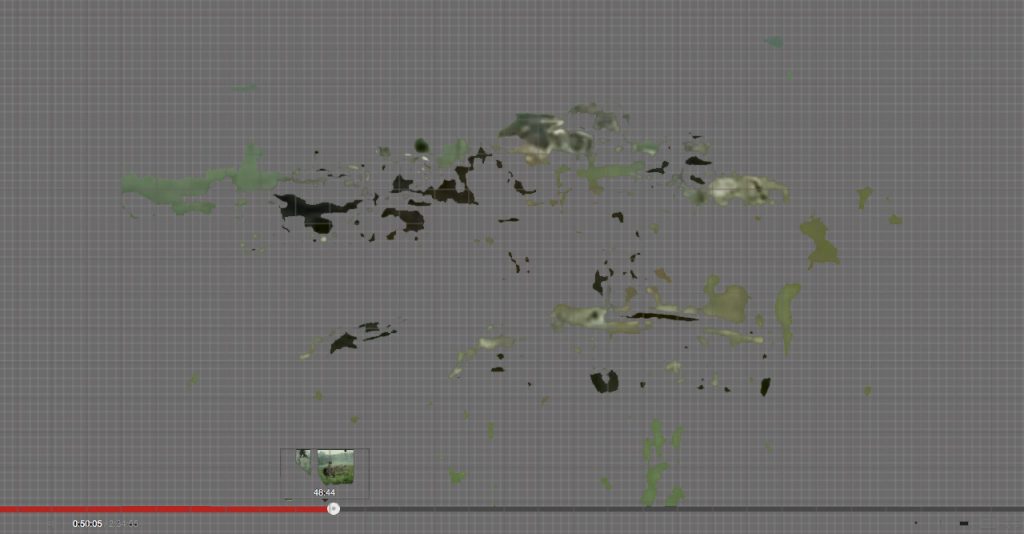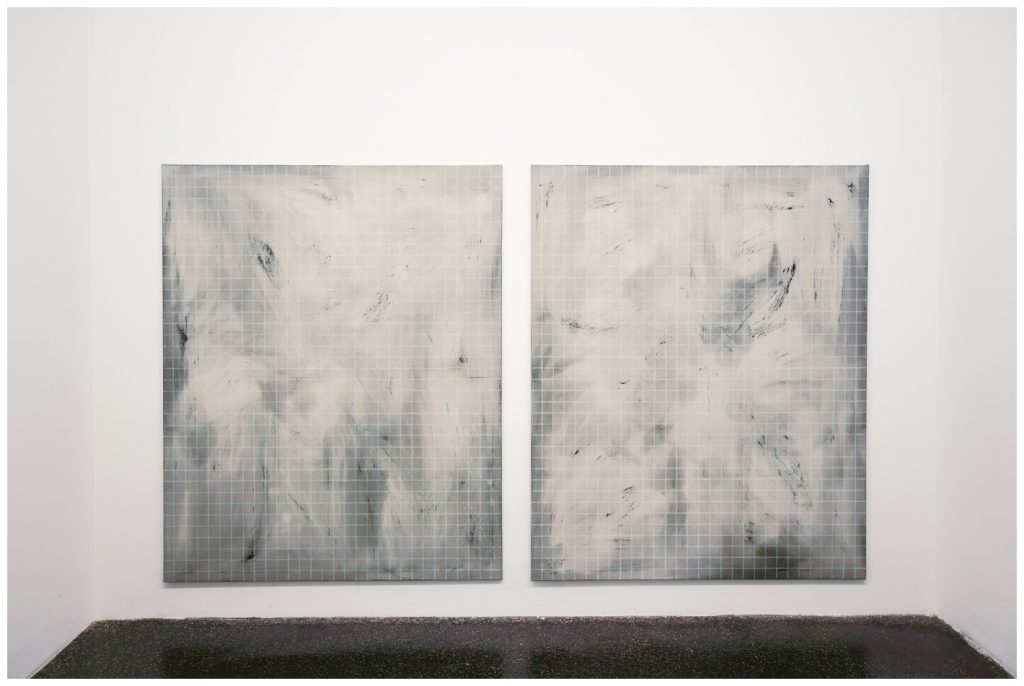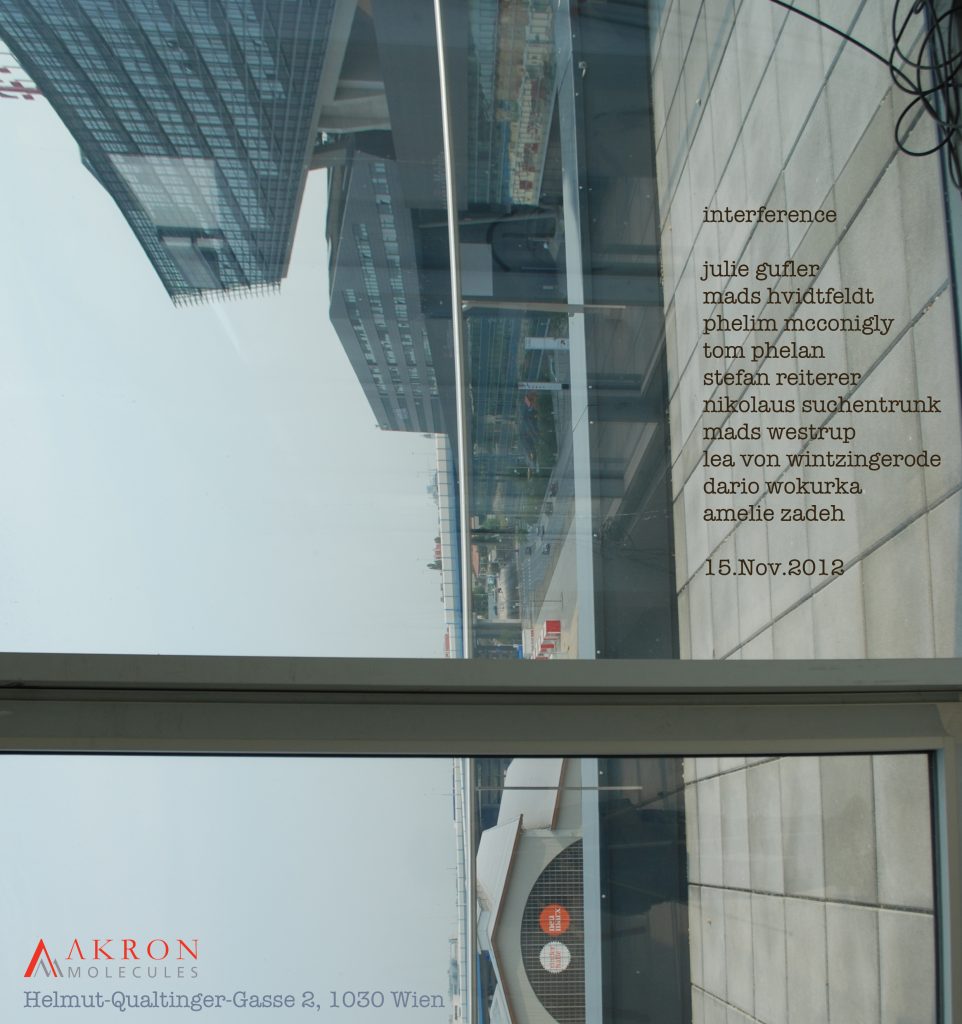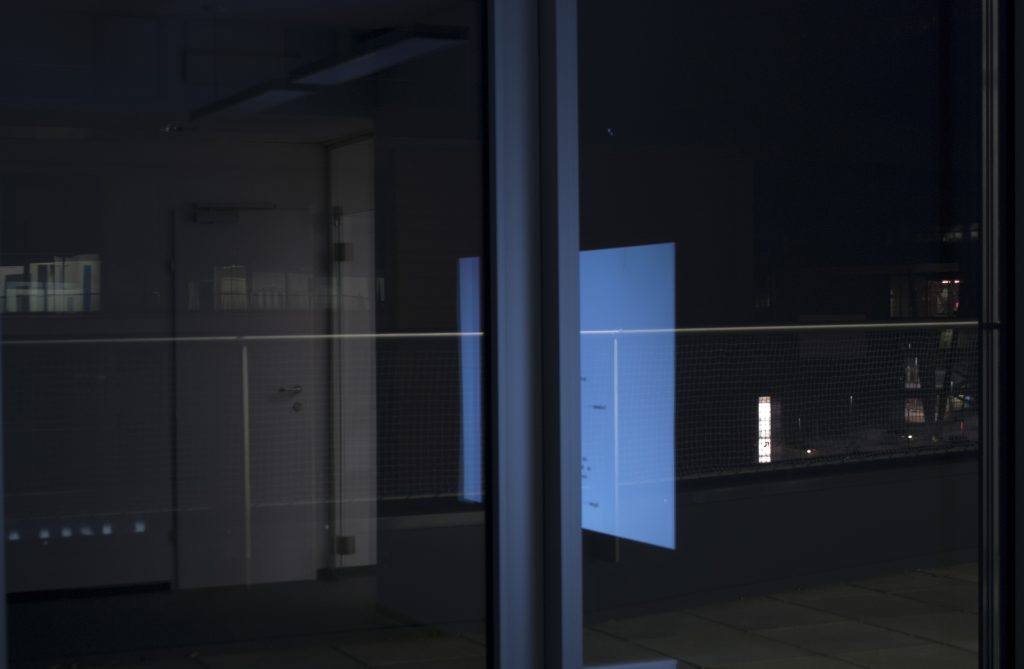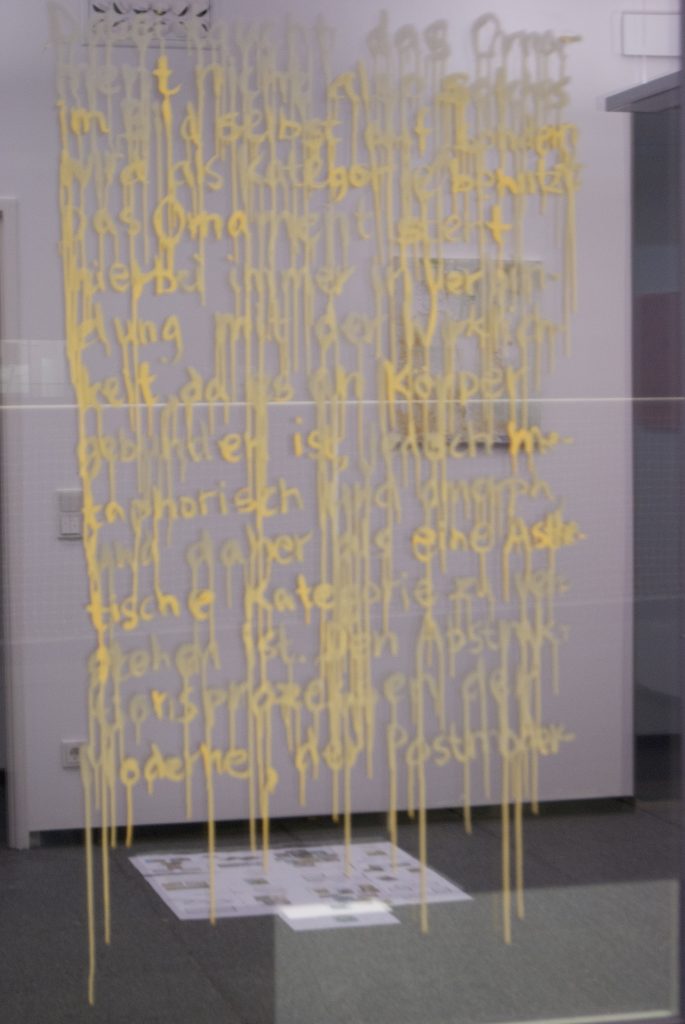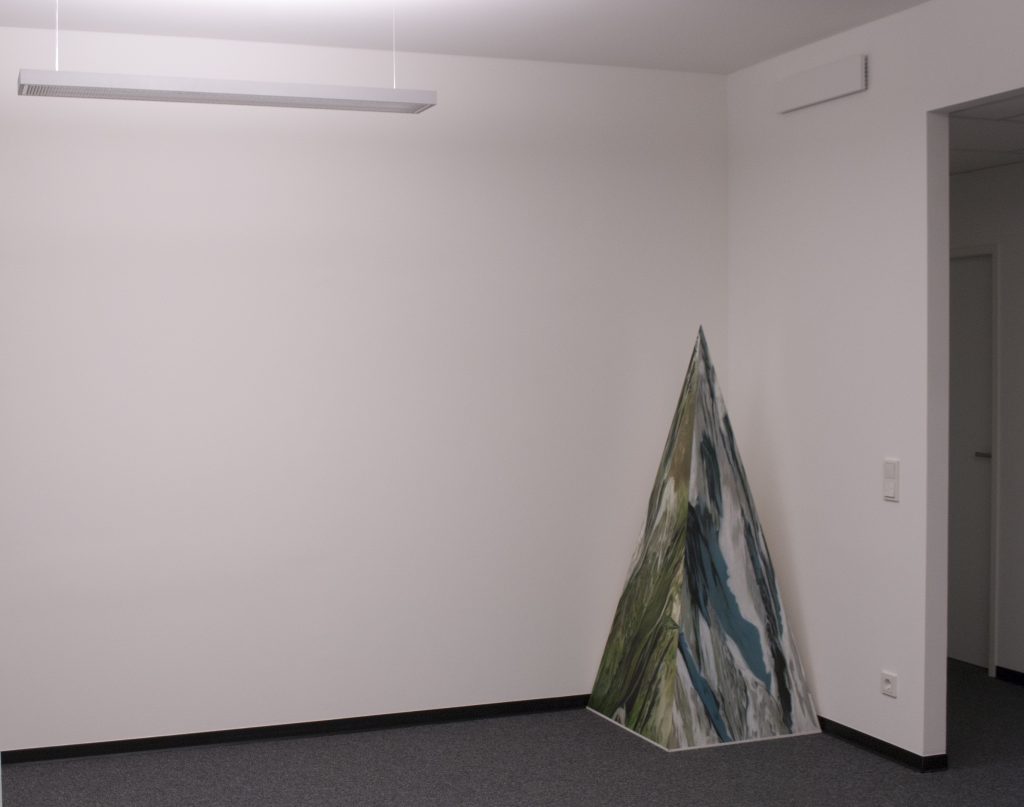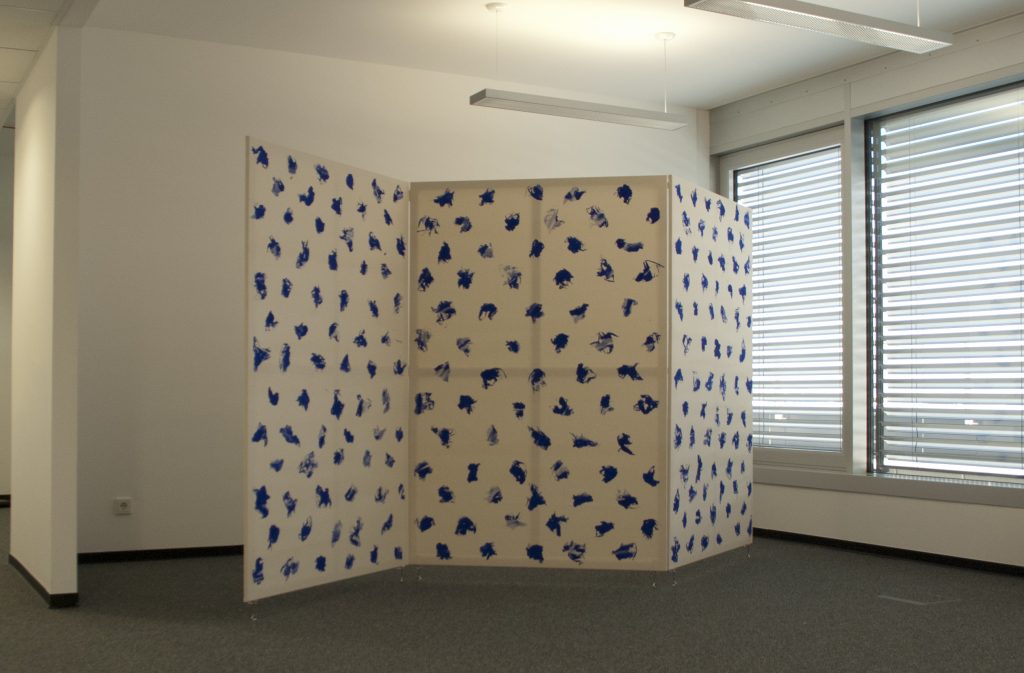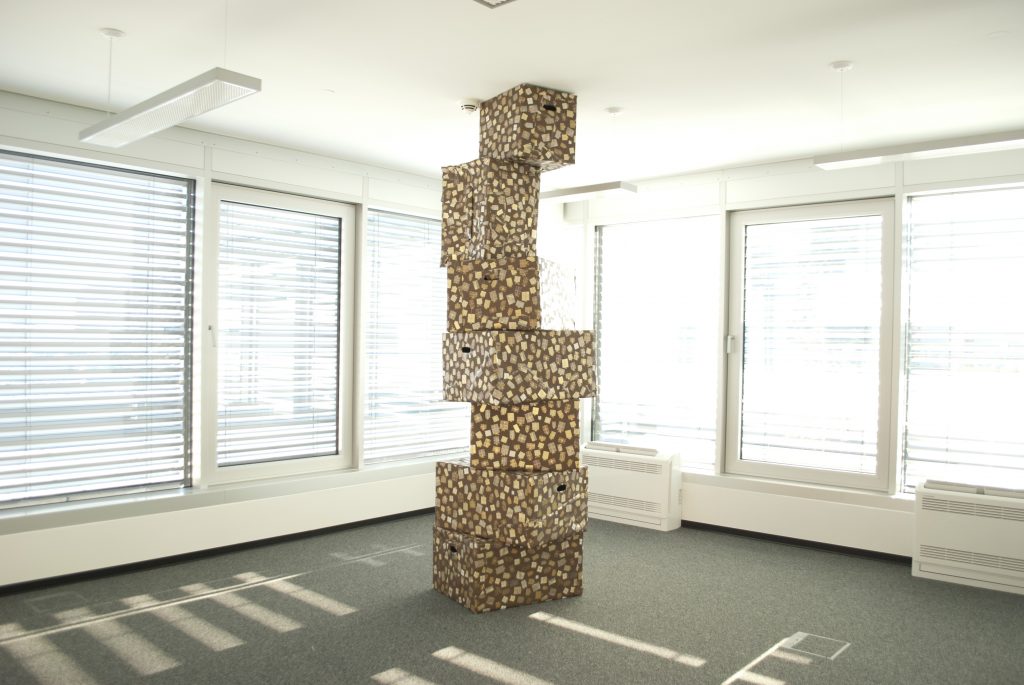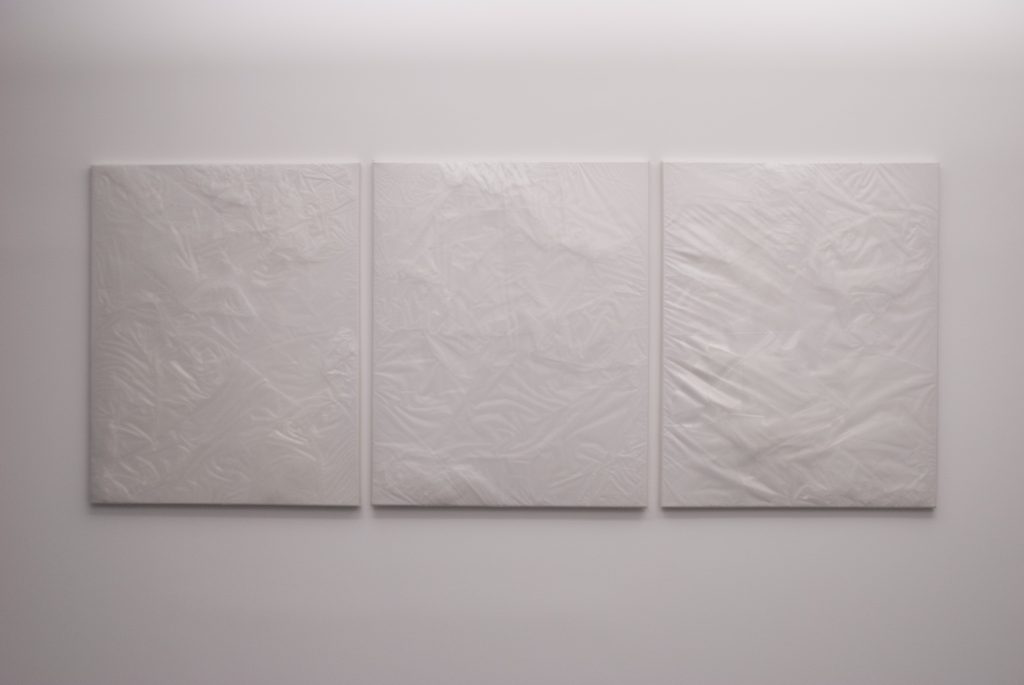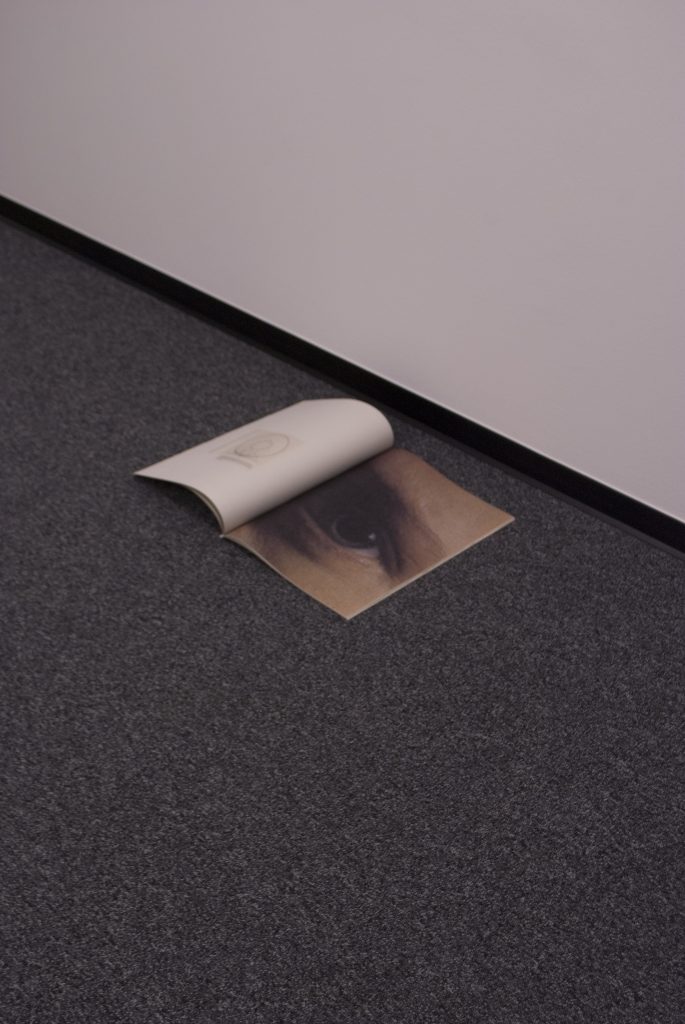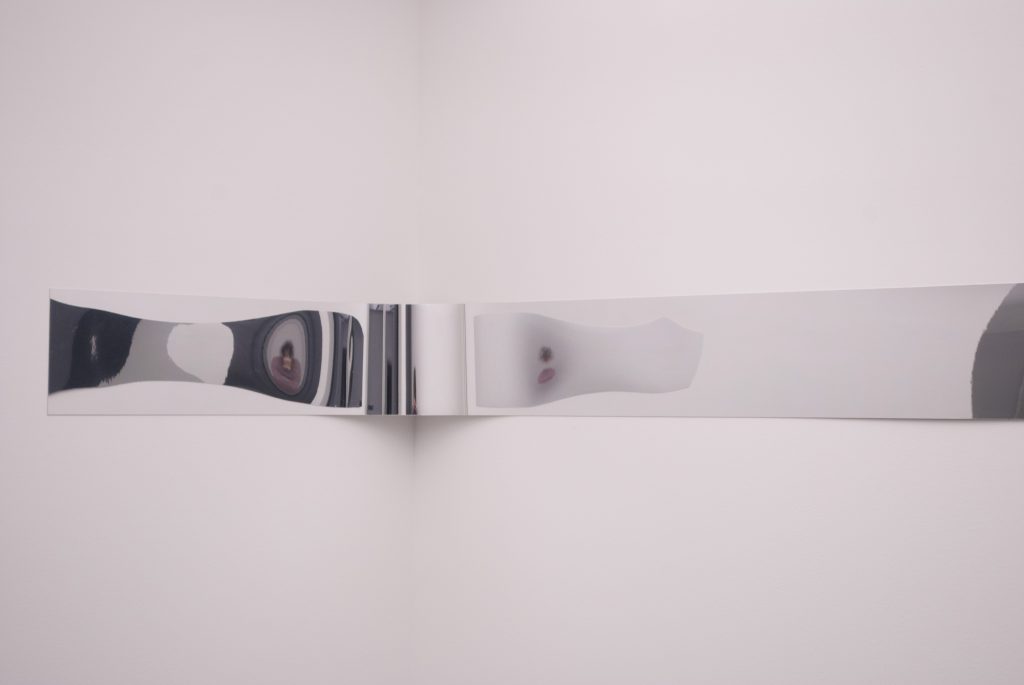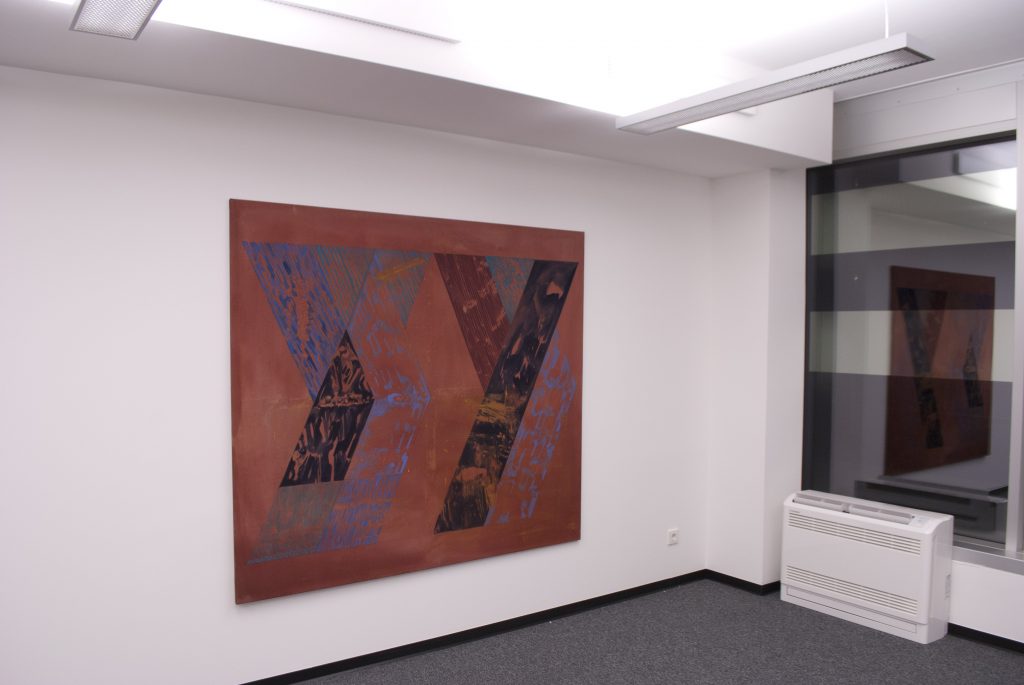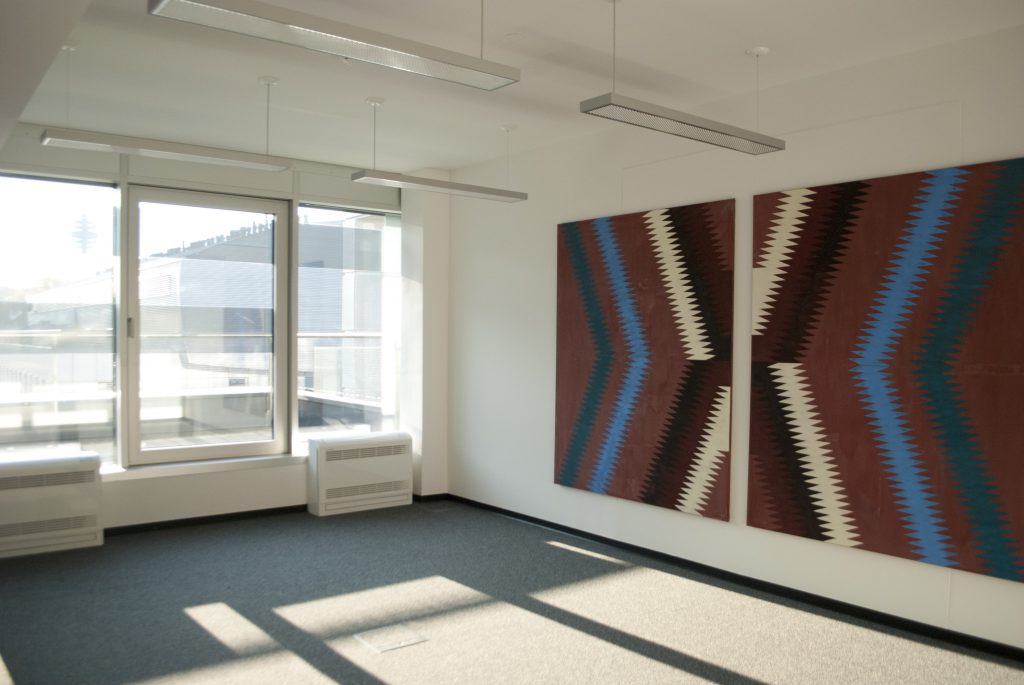@ Medical Museum, Uni.Hospital Georgi Stranski, Pleven, Bulgaria
w/ Atanas Petrov Foundation
Brishty Alam, Minda Andren, Josefin Arnell, Anna Barfuss, Miriam Bethmann, Eva Egermann, Karine Fauchard, Benjamin Grodin, Bernhard Garnicnig, Lukas Heistinger, Ludwig Kittinger, Bernd Kräftner, Galya Krumova, Petya Krumova, Lazar Lyutakov, Phelim McConigly, Billie Meskens, Christoph Meier, Martyn Reynolds, Hans Schabus, Axel Stockburger, Mads Westrup
EN
On the basis of an invitation in line with the 150 year Jubilium of the foundation of University Hospital “Georgi Stranski”, an exhibition titled “Appendix” shall take place with 22 artists and architects, working on site within various buildings of the hospital.
“Appendix” looks at various architectural, historical, political and economic possibilities, where artists produce works within the structures and buildings on site; making use of materials; interacting with medical staff and students, while working outside the traditional white cube spaces of contemporary art.
The hospital buildings and surroundings present a broad horizon of possible manifestations, from the skeletal structure of a building, provided a new skin through sculptural and materialistic interventions, or the former University building, to Bulgaria’s first medical museum, opened in 1965 – a modernist building designed by architect Atanas Petrov.
The participants work in various fields such as architecture, sculpture, new media, painting, performance and associated fields of research. The participants reside in numerous European countries presenting works through specific material, structure and some with concepts such as overtones of body politics, bio-politics, diagnostics, art and science, and more.
The very specific space opens questions on the function of institutions and their interaction with others, the historical aspects of medicine from Bulgaria’s political history or the changes introduced in post communist society, its modernisation and the associated complications.
The exhibition is funded by the Austrian Cultural Ministry.
“A new definition of the status of the patient in society, and the establishment of a certain relationship between public assistance and medical experience, between help and knowledge; the patient has to be enveloped in a collective, homogeneous space.” — Michel Foucault, The birth of the Clinic
BG
По покана на университетска болница „Георги Странски“ във връзка със 150-годишния й юбилей ще се проведе изложба, озаглавена „Апандисит“ с 22 художници и архитекти, които ще работят на място в различни сгради на болницата.
„Апандисит“ разглежда различни архитектурни, исторически, политически и икономически възможности, при което художниците създават своите творби в структурите и сградите на място, ползвайки материали, взаимодействайки с медицинския персонал и студентите, работейки извън обичайния бял куб на пространствата за съвременно изкуство.
Сградите на университатската болницата и техните околности предлагат широк набор от възможни прояви – от скелета на сграда, който получава нова кожа чрез скулптурни и материалистични намеси, през бившата сграда на университета, до първия медицински музей в България, открит през 1965г. – модернистка сграда, проектирана от архитект Атанас Петров.
Участниците работят в различни сфери като архитектура, скулптура, нови медии, живопис, перформънс и свързаните с тях изследователски области. Участниците живеят в различни европейски страни и ползват в работите си специфични материали, структури, а някои от тях и понятия като нюанси на политика на тялото, биополитика, диагностика, изкуство и наука и др.
Силно специфичното място отваря въпроси за фукнцията на институциите и тяхното взаимодействие с другите, историческите аспекти на медицината от политическата история на България или настъпилите в посткомунистическото общество промени, неговата модернизация и свързаните с нея перипетии.
Изложбата се финансира от Министерството на културата на Австрия.
„…ново определение на статута на болния в обществото и установяването на отношение между подпомагане и опит, помощ и знание; болният трябвало да бъде обвит в колективно и еднородно пространство.“ – Мишел Фуко, “Раждане на клиниката”
…
Thankyou Martin Petrov for the translation.
link
Ludwig Kittinger – “On the evolution of cooperation I & II”
Benjamin Grodin – “How to dismantle a body”
Hans Schabus – “clothes line”
Martyn Alexander Reynolds untitled series
Bernd Kräftner from the series “Types of Helping”
Bernd Kräftner – “Department of Ontological Patchwork”
Eva Egermann – installation of Crip Magazine
Worldeater – Generics, Axel Stockburger (2015) Wallpaper B&W (360cm x 240cm)
Minda Andrén – untitled works for appendix
Anna Barfuss – Screen for “Paisley movements”
Lazar Lyutakov – “the incantation of empty events III”
Phelim McConigly “Radio Script corrections / opening at the medical museum, 1971 / 2015”
Karine Fauchard / Diashow ~ “A machine to tell at which age I get old” ~ Etude No.2
